Personal Note: Harriet and I arrived in our hired camper van at Queenstown in the late afternoon. We had been considering driving over to Milford Sound the next day but we learnt that it was 400 km. across on the East side of the South Island of New Zealand. We didn’t want to travel that distance when we only had eight days in New Zealand.
However, when we were down in the office of the van site, we saw a notice that there was a bus leaving at 7.30 am. in the morning for Milford Sound. Did we want to go? We sure did!
What we saw was spectacular !! Below are photos of what we saw in the bus and the boat where we all went on right up Milford Sound to the Pacific Ocean and back again.
Milford Sound Details:
______________________________________________________________________________
From https://www.milford-sound.co.nz/about/
Milford Sound sits within Fiordland National Park in the southwest of New Zealand’s South Island. The park is part of Te Wahipounamu, a UNESCO World Heritage site. Milford Sound is the jewel of Fiordland National Park – a hidden secret waiting to be discovered.
Despite its name, Milford Sound is actually a fiord, not a sound. It is also the only fiord in New Zealand that is accessible by road. However, its remote location, bounded by steep cliffs and dense rainforest, means its special features remain unspoilt. Rain or shine, Milford Sound continues to captivate even the most experienced traveller with its beautiful surroundings, ink-dark waters, gushing waterfalls and captivating views.
It’s known for towering Mitre Peak, plus rainforests and waterfalls like Stirling and Bowen falls, which plummet down its sheer sides. The fiord is home to fur seal colonies, penguins and dolphins. Milford Discovery Centre and Underwater Observatory offers views of rare black coral and other marine life. Boat tours are a popular way to explore.
____________________________________________________________________________
Travelling to Milford Sound:

The bus we went on from Queenstown to Milford Sound
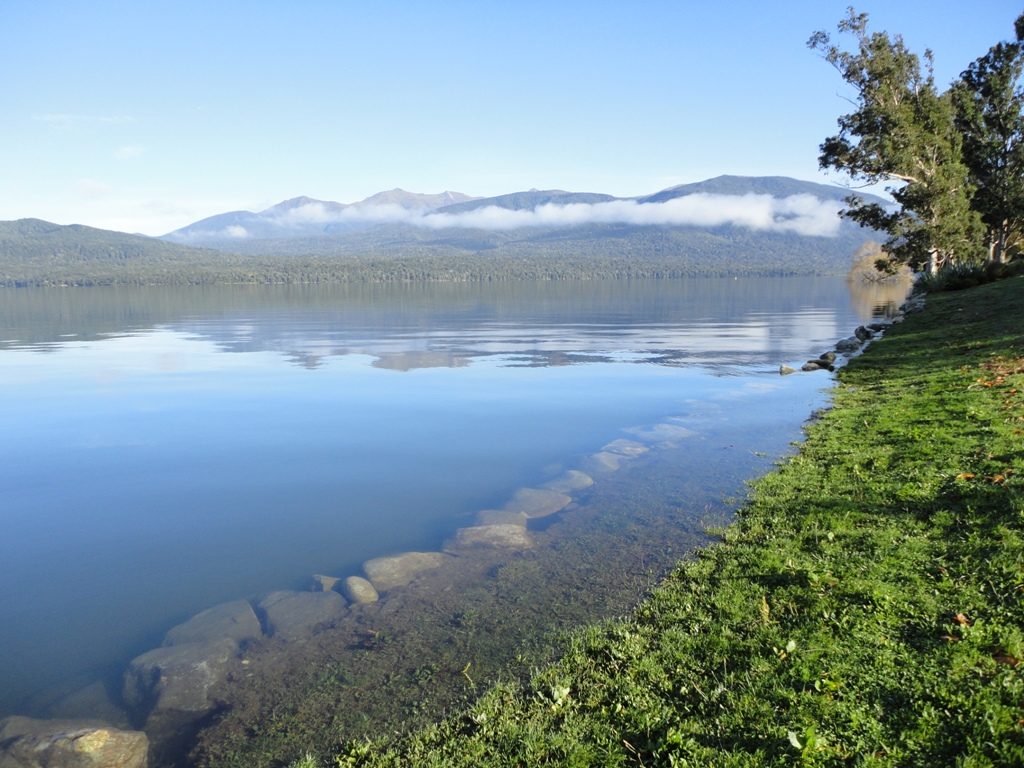
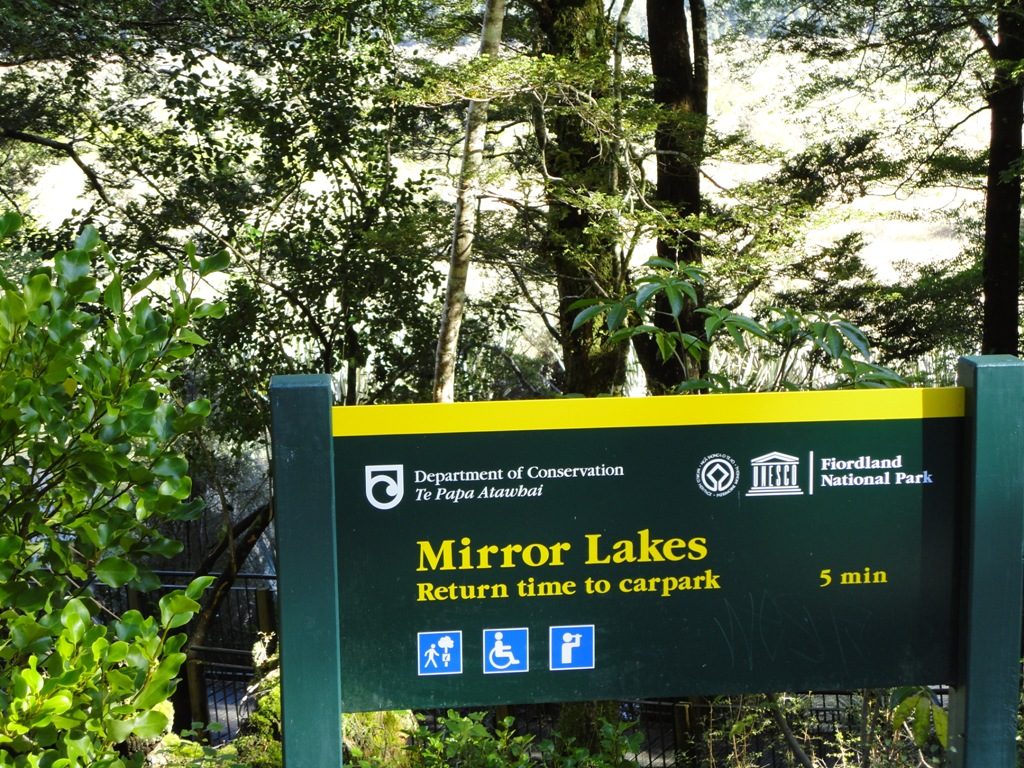
A sign on entering Fiordland National Park
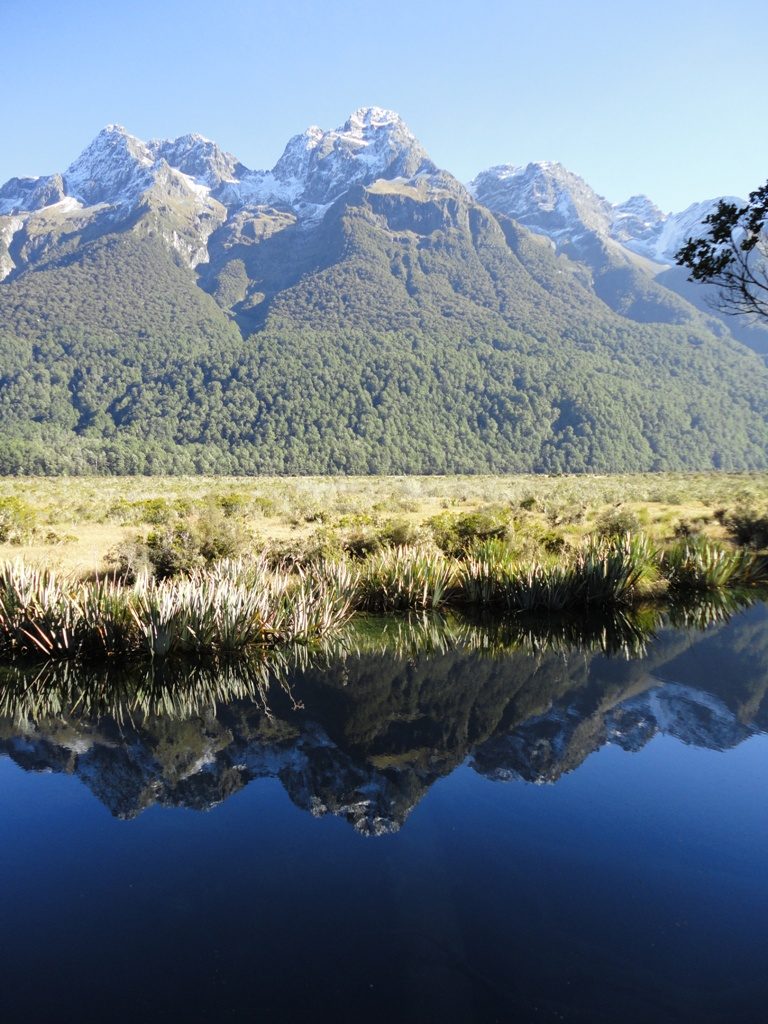
Mirror Lakes
From: https://www.milford-sound.co.nz/travel-info/highlights/mirror-lakes/
One of the highlights of the Milford Road, the Mirror Lakes are world famous for their beauty and the way they reflect their surrounding scenery. You’ll find the Mirror Lakes within the Eglinton Valley.
Stunningly scenic, on a calm day they provide breathtaking reflections of the Earl mountain ranges opposite. Thousands of tourists visit the Mirror Lakes every year in search of the perfect photo op. However, they’re also a habitat for many animals, including some of our rarest birds.
New Zealand’s smallest duck, the scaup or pāpango, live in the Mirror Lakes and other Eglinton Valley waterways, as do the grey duck or pārera. Under the water you’ll find long-finned native eels, as well as brown and rainbow trout which were introduced in the 1800s.
The Mirror Lakes were created when the Eglinton River shifted its course long ago, leaving these two river bends behind to form what is known as ‘oxbow’ lakes. Together with the Eglinton River they form part of the largest system of inland waterways in New Zealand, stretching (almost unbroken) from Martins Bay/Kotuku in the north to Te Wawae Bay on the south coast.
To see the Mirror Lakes, you’ll follow the signs from the roadside carpark and take a short walk along a well-maintained boardwalk through native forest. The walk is about 400m (437 yards) long. If you’re visiting the Mirror Lakes on a Milford Sound day tour, listen to your driver when they tell you what time to return to the bus. The lakes are so beautiful it’s very easy to stay too long taking “just one more photo”!
A portion of the water of Milford Sound becoming visible. The mountains around Milford Sound becoming prominent with snow on top.
Even on a cloudy day, the Mirror Lakes are pretty spectacular. Vast drifts of mist above, the foothills of the Eglinton Valley thickly covered in native beech forest, the wide open valley floor, and the lakes themselves, thickly fringed with wetland plants that peer at their own reflections.
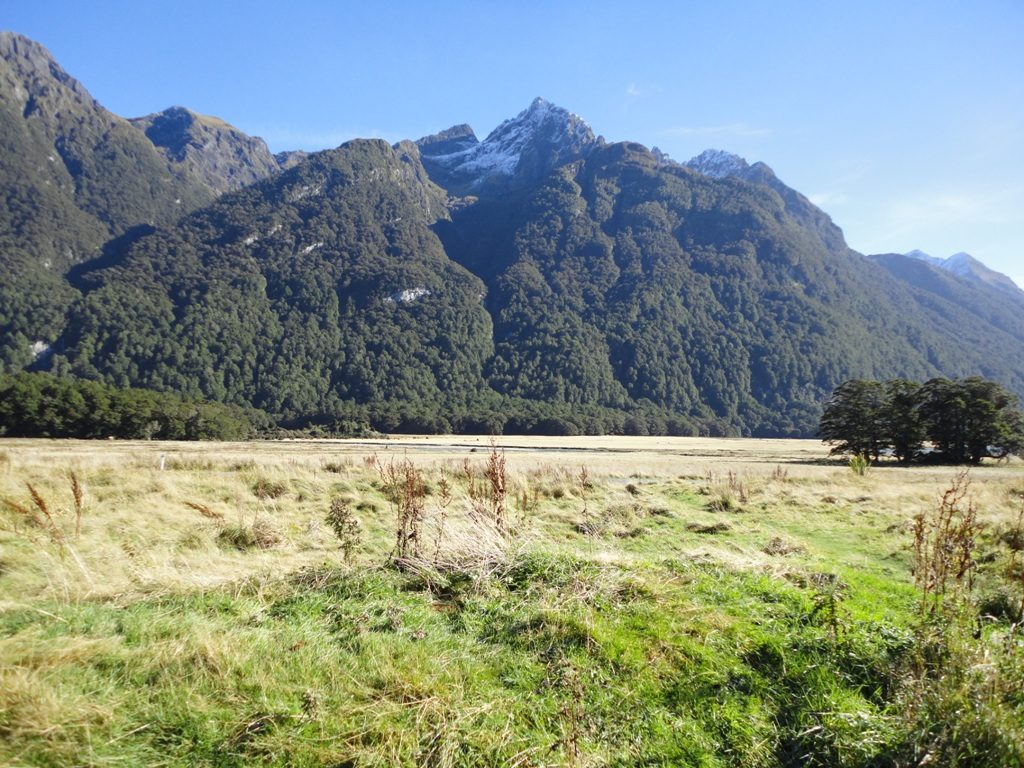
The flat floor of the valley is covered in an eye-catching gold tussock grass over the flat floor of the valley. This leads up the sudden rise of the forested mountains.
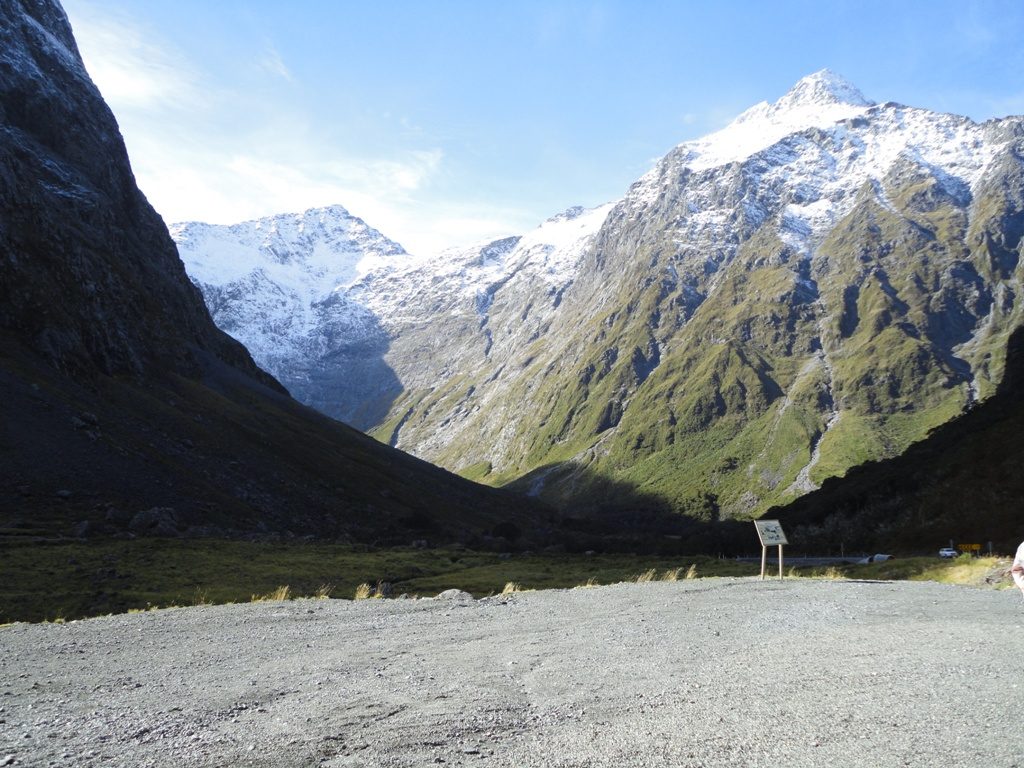
The mountains around Milford Sound becoming very prominent with snow on top becoming very apparent.
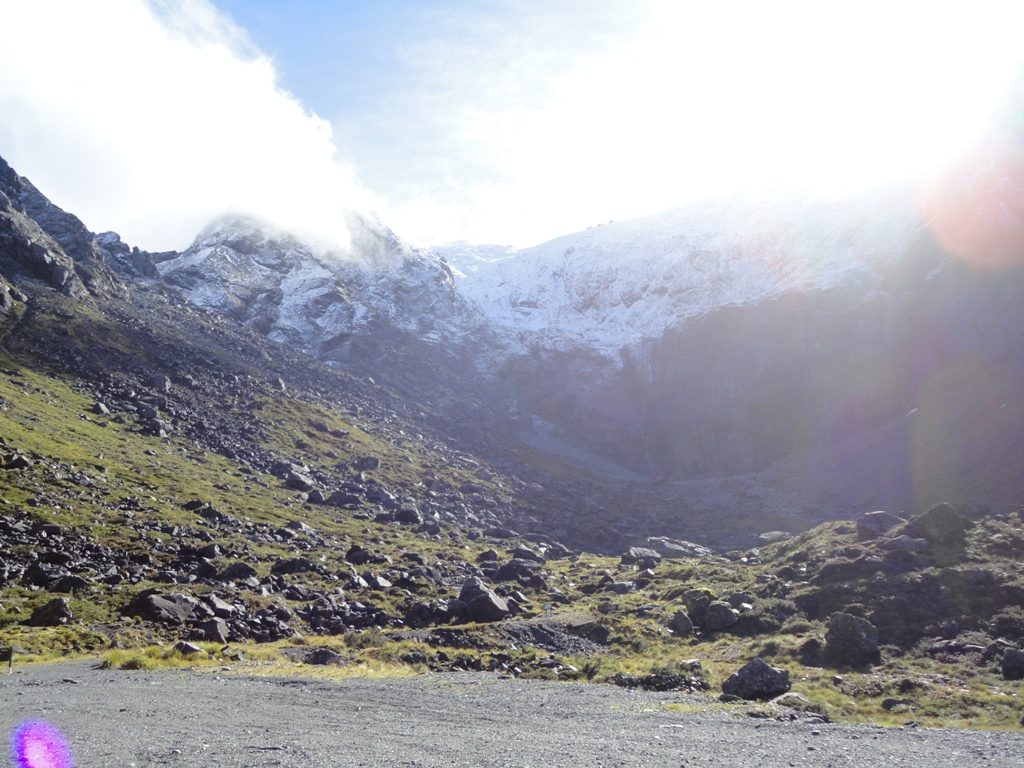
Milford Sound mountain peaks
Natural features of Milford Sound include the many peaks which surround the water. At the pinnacle of Milford Sound is iconic Mitre Peak – standing a proud 1,692 metres above sea level, it is certainly an impressive sight to behold. It was named after its resemblance to a bishop’s mitre (head-dress). Interestingly, its unusual summit is actually made up of five separate but closely grouped peaks.
Other distinctive peaks around Milford Sound include The Elephant (1517m) and The Lion (1302m), both named for the animals they appear to represent.
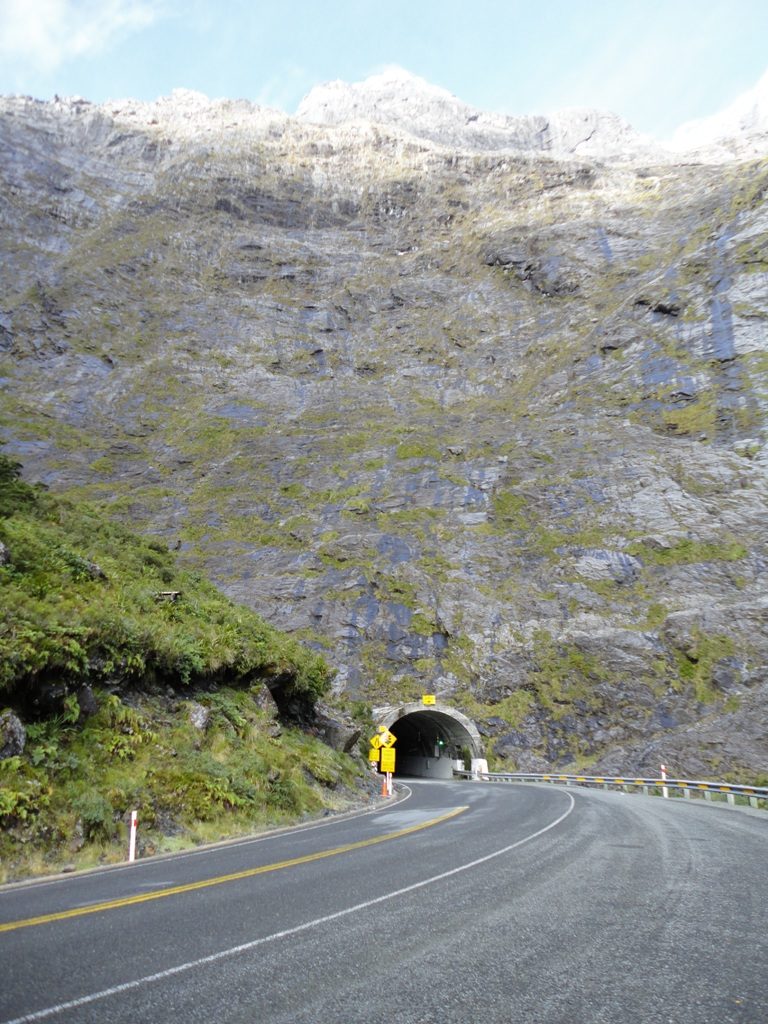
The Milford Sound road enters a tunnel under the mountain.
From: https://www.milford-sound.co.nz/travel-info/highlights/homer-tunnel/
Just before the Milford Road begins its descent through the Cleddau Valley into Milford Sound, it passes through the Homer Tunnel, a 1.2 km-long tunnel through solid rock. Before the tunnel opened in 1954 after 19 years of construction, there was no road access to Milford Sound.
Although the Homer Tunnel is wide enough for a bus and a small vehicle to pass each other, traffic lights operate during the busy summer months to keep it safe. The tunnel is a fairly steep 1:10 gradient running east to west.
The tunnel passes through the Darran mountain range, below the Homer Saddle, and into the Cleddau Valley, 945 metres above sea level. Both the tunnel and saddle are named after William Henry Homer, who discovered the saddle along with George Barber in 1889 while on a surveying expedition. At the time, Homer is said to have suggested that a tunnel under the mountains would be the best way to bring a road to Milford Sound. However, it took many decades before his idea became reality.
Building the Homer Tunnel
In 1935, during the Great Depression, the government sent a team of relief workers to start work on the tunnel. At first a team of just five men worked with pickaxes to carve away at the rock. Over the years the numbers grew, with the workers living in a large camp on Knobs Flat. The men worked in very tough conditions, often in extremely cold and windy weather, but they persevered.
Although the workers broke through to the other side just five years later, it took much longer to widen the tunnel so it was safe for cars. The project was delayed by World War II, and then again in 1945 by a large avalanche.
The Homer Tunnel finally opened in 1954, meaning more and more visitors could access this natural wonder. Passing through the tunnel and seeing the steep, winding road leading down through the Cleddau Valley is nothing short of breathtaking.
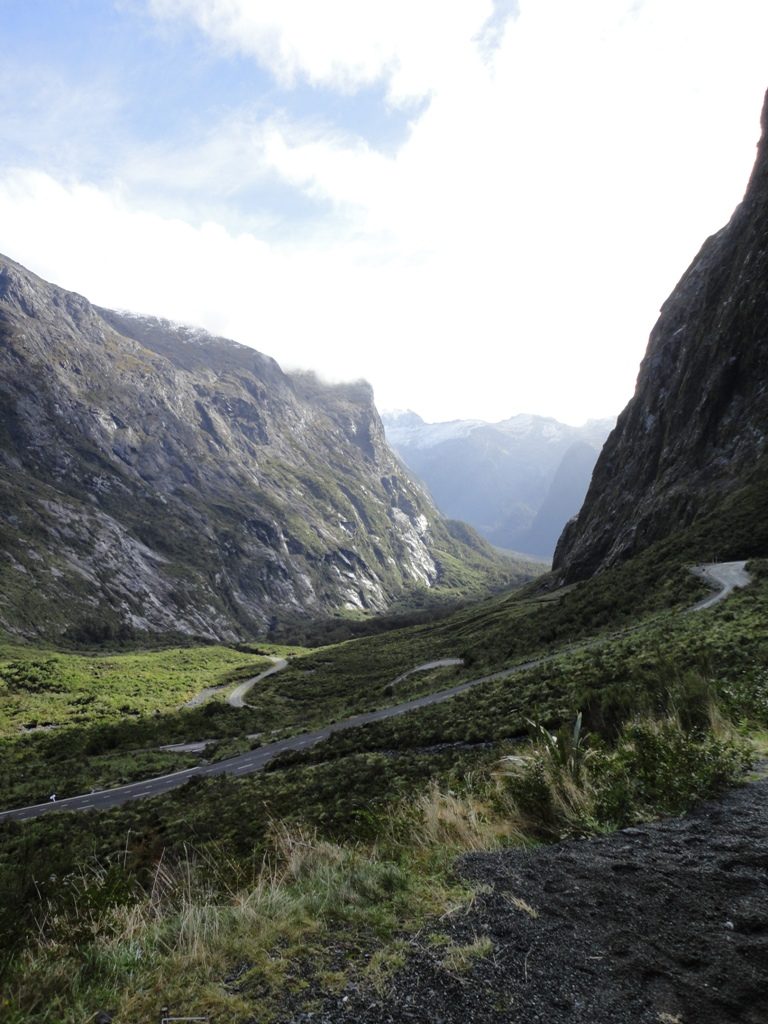
The Milford Sound road twists and turns in this mountainous terrain.
From: https://www.milford-sound.co.nz/travel-info/highlights/cleddau-valley/
After passing through the Homer Tunnel, the Milford Road emerges into the impressive Cleddau Valley. Here you’ll find one of the most impressive photo stops along the Milford Road: The Chasm.
Bounded by steep mountain ranges on either side, this steep valley is named for the Cleddau River which flows through it. This, in turn, was named by early European explorer John Grono, drawing once again on his home country of Wales for inspiration. The River Cleddau is the body of water which flows into Milford Haven, the harbour after which Grono named Milford Sound.
Views in the Cleddau Valley
Straight after the tunnel, the road winds sharply down through the valley in a series of hairpin turns. The imposing granite mountain sides, skirted by native forest lower down, form an awe-inspiring landscape.
In the winter months, the area around the Homer Tunnel and Cleddau Valley is prone to avalanches. While the threat of a large scale avalanche can close the Milford Road, smaller avalanches can be seen further away from the road – an impressive reminder of nature’s power, as snow pours down the mountainside, carrying rocks and debris with it.
The risk of avalanche in the Cleddau Valley is one of the reasons you must prepare for the trip to Milford Sound. If you choose to drive yourself there, you’ll need snow chains for your vehicle and to obey all signs and signals you see along the way. This is another reason why choosing a Milford Sound day tour with an experienced local driver is a good idea.
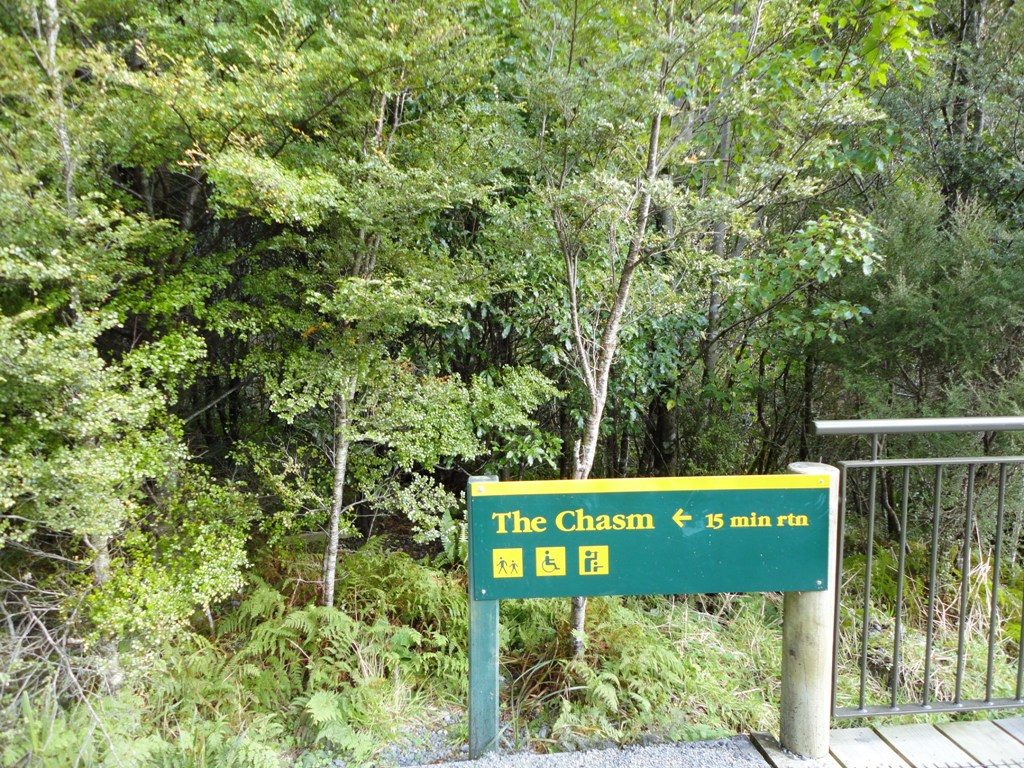
A sign on walking to the Chasm in Fiordland National Park overlooking Milford Sound. The photos show the sort of vegetation is along the Chasm walk. This is typical of the forest-carpeted canyons of Milford Sound. See the photos below.
From: https://www.milford-sound.co.nz/travel-info/highlights/the-chasm/
Not far from the Homer Tunnel, another scenic highlight is worth a brief stop: the Chasm is a series of gushing waterfalls just a short walk from the road. If you are travelling to Milford Sound on a day tour, your driver guide will probably make a stop at the Chasm.
From the carpark, you’ll walk through tranquil native forest along an easy, well-maintained track. Listen out for native birdsong as you stroll along the path. As you near the Chasm, you can’t miss hearing the powerful thunder of the falls. Cross over a series of footbridges and watch the white water gushing down far below, disappearing through the rock and reappearing downstream.
The Chasm was formed by the Cleddau River being forced through a narrow rocky valley on its course down from the Darran mountains. As the waters built up, they created thunderous waterfalls. Small rocks and gravel carried downstream scoured the river down to its bedrock. In some places, the river’s powerful currents swirled these small rocks around in small nooks and crannies. Over the centuries, this process sculpted the surrounding rocks into marvellous swirling patterns and smoothed-out basins.
The sheer force of the water as it pounds through the Chasm is impressive to behold – but notoriously difficult to photograph. It’s hard to capture the depth and volume of these waterfalls from any one angle. And if you’re visiting Milford Sound in wet weather, this photo stop will be even more awesome!
The walk from the carpark to the Chasm is 400m (437 yards) return and is fairly flat. It is very important to stay on the path and hold onto all safety railings, as the area around the Chasm can be dangerous.
After you’ve visited the Chasm, return to the Milford Road. From here it descends through forest-carpeted canyons to Milford Sound itself, where even more breathtaking scenery awaits you.
Cleddau Valley
After passing through the Homer Tunnel, the Milford Road emerges into the impressive Cleddau Valley. Here you’ll find one of the most impressive photo stops along the Milford Road: The Chasm.
Bounded by steep mountain ranges on either side, this steep valley is named for the Cleddau River which flows through it. This, in turn, was named by early European explorer John Grono, drawing once again on his home country of Wales for inspiration. The River Cleddau is the body of water which flows into Milford Haven, the harbour after which Grono named Milford Sound.
Cleddau Valley, Fiordland – Südinsel von Neuseeland
Cleddaudian Clouds, Cleddau Valley, Fiordland
___________________________________________________________________________________________________________
The photos below demonstrate the plant communities
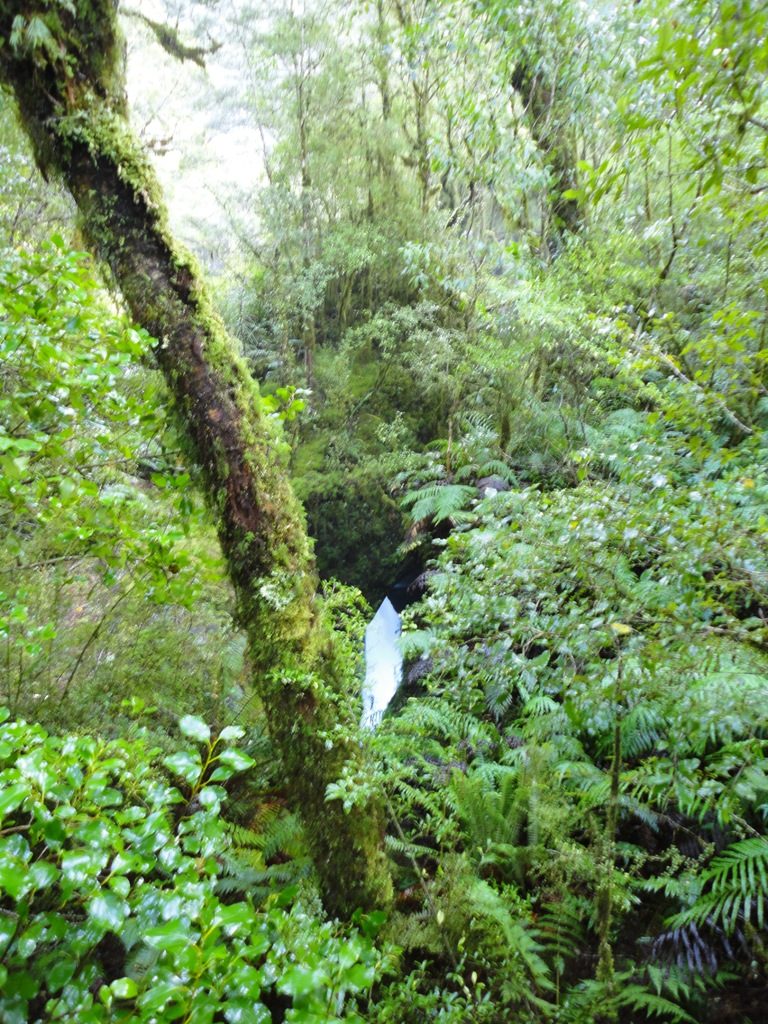
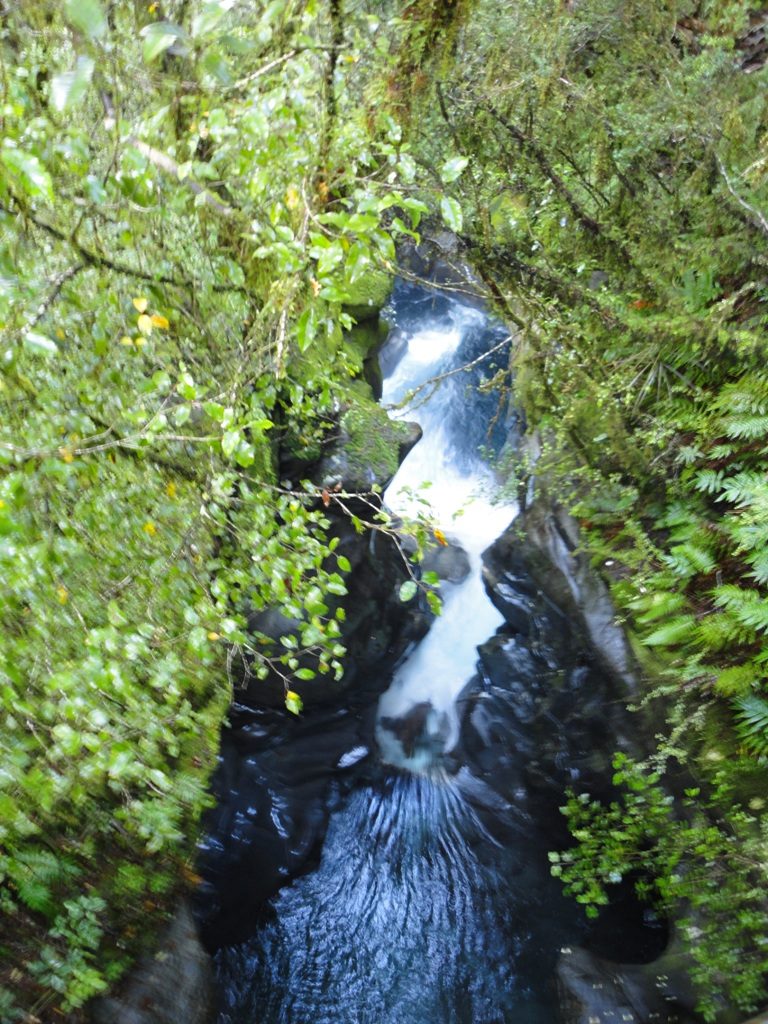
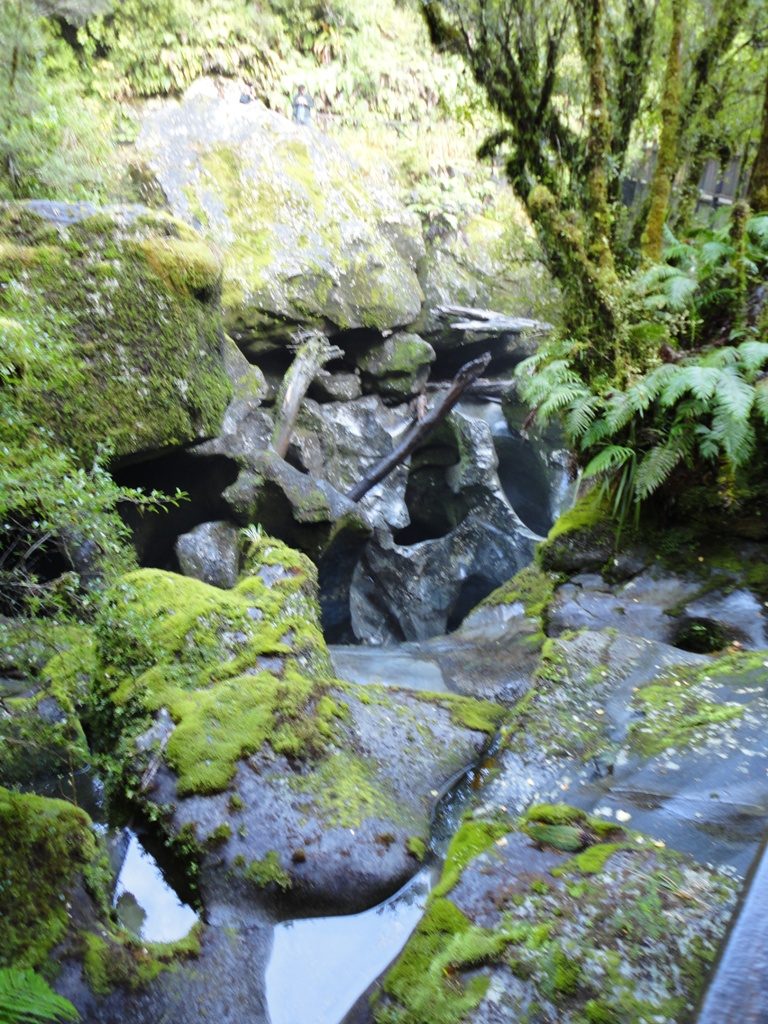

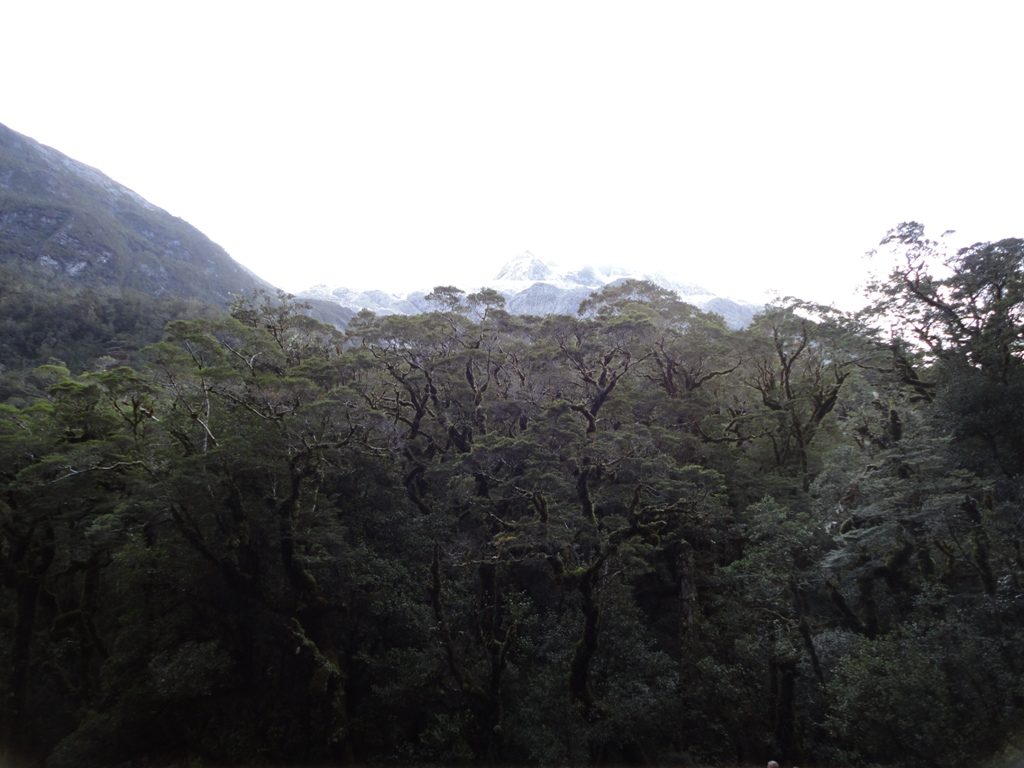
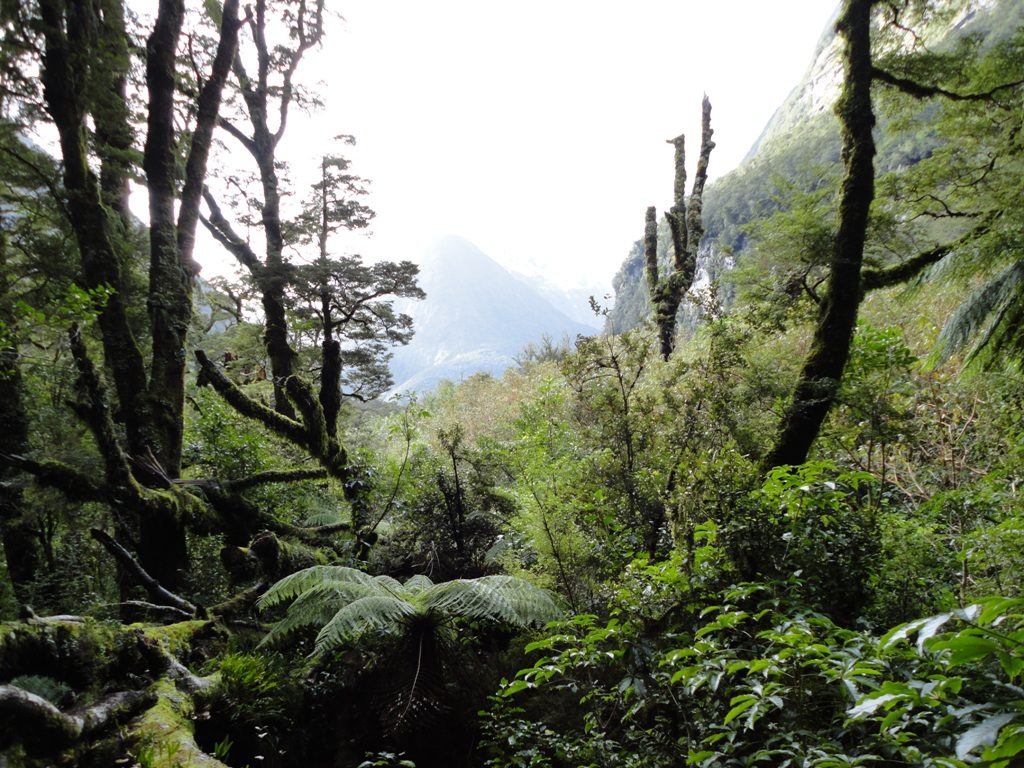
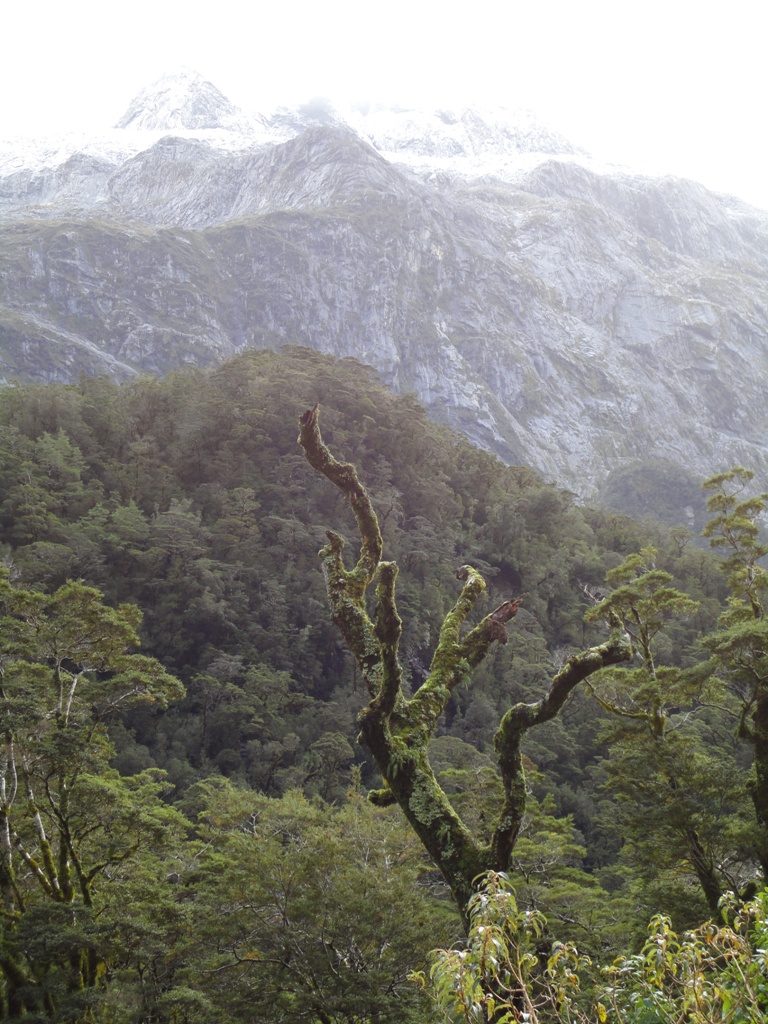
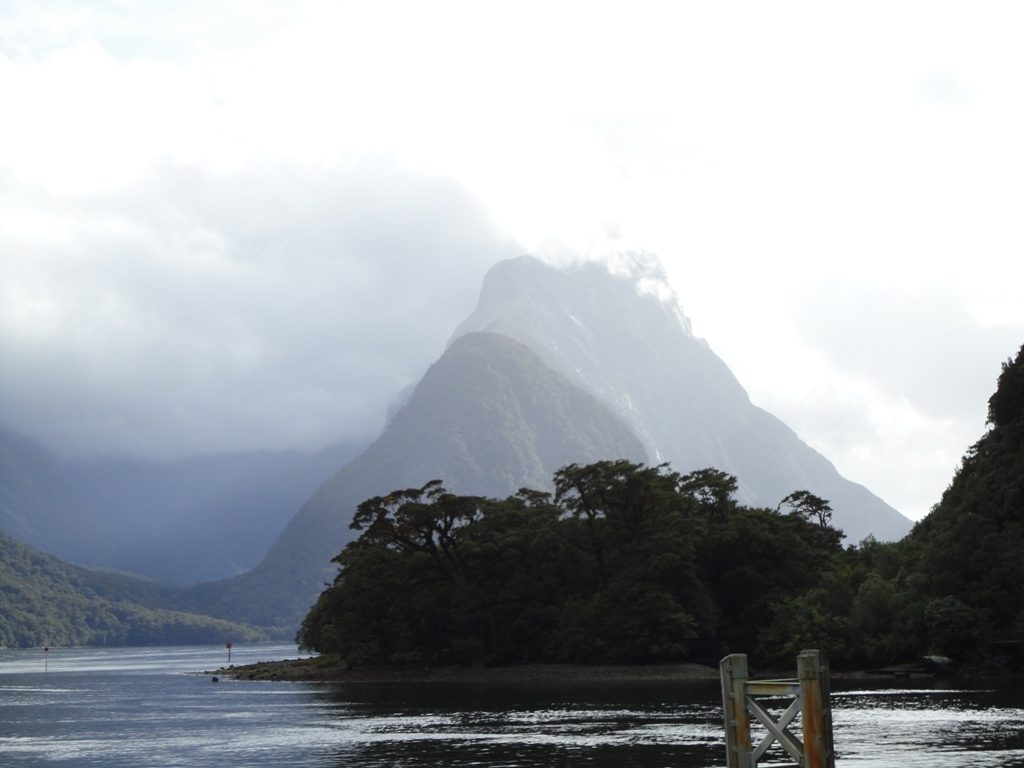
It is one of the wettest places on Earth
Milford Sound tops the rainfall meter of New Zealand. The annual rainfall is pegged at 6,813mm falling about 182 days of the year. The highest recorded rainfall on a single day is at 250mm. September, October, November and December are the wettest months in Milford Sound, with an average of 16 to 18 days of rainfall in a month. But don’t let that stop you from visiting! Milford Sound is even more magical when the rains come. It amplifies the already powerful waterfalls and creates hundreds of temporary ones which cascade down the cliff faces in a fury of power and beauty.
______________________________________________________________________________
The Ship on Milford Sound:
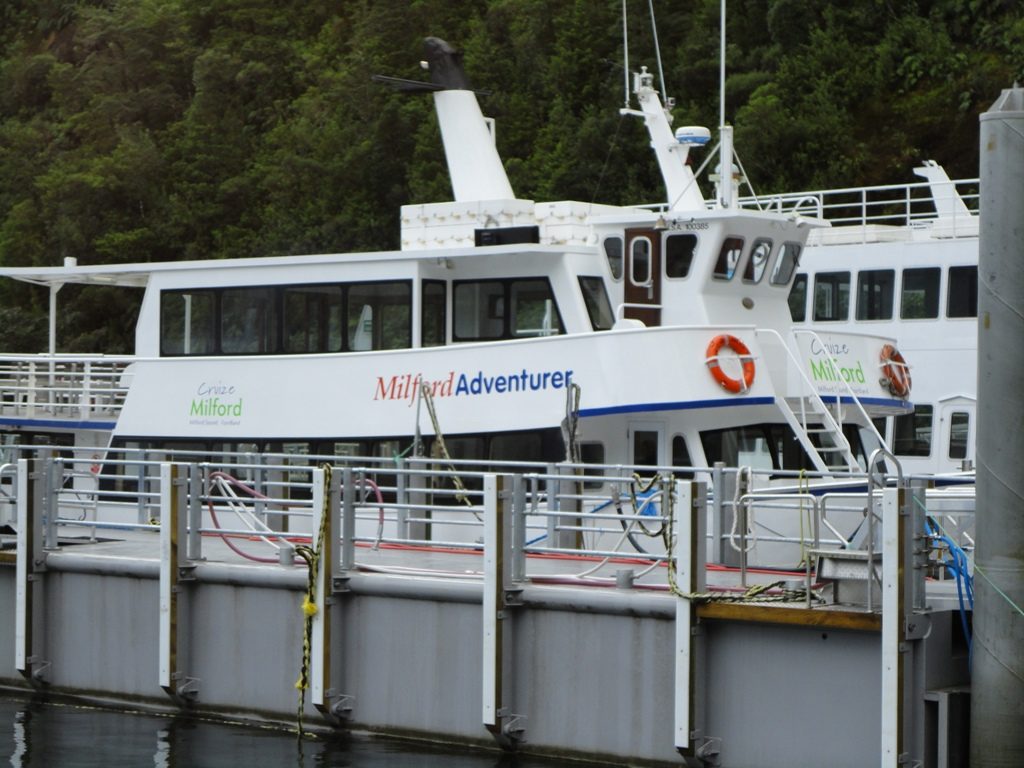
At Milford Sound, after we had travelled on a bus over the mountains, we then went on a 1.50 hour trip on a boat way out to the Tasman ocean and back again …. AWESOME!!
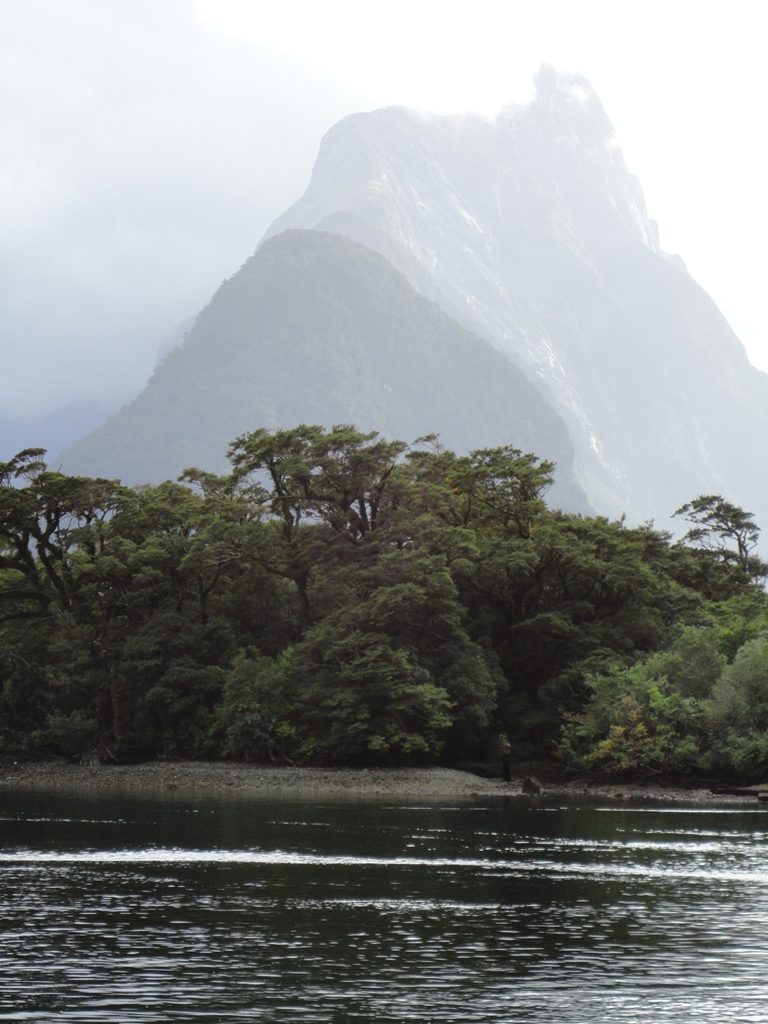
//

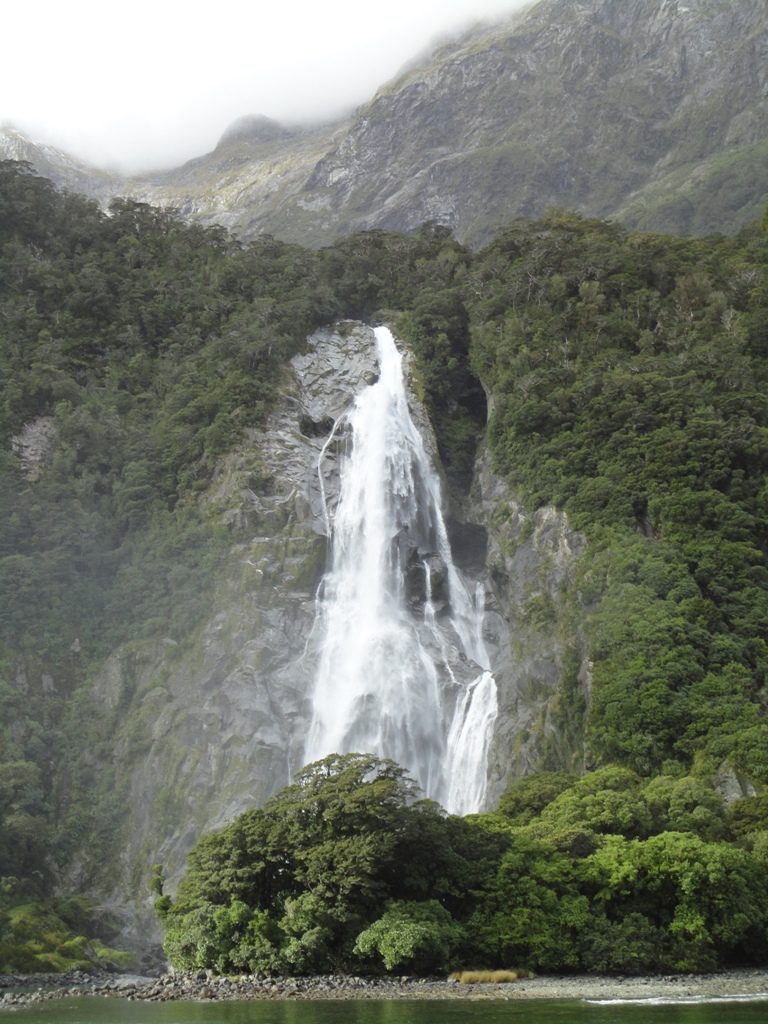
Milford Sound waterfalls
Gushing down from the surrounding rainforest into Milford Sound are myriads of cascading waterfalls, some reaching a thousand metres in length. Many of these fluctuate depending on rainfall. There are two main permanent waterfalls in Milford Sound: Lady Bowen Falls (162m high) and Stirling Falls. Lady Bowen Falls provides a source of both water and electricity for the residents of Milford Sound.
Because the waterfalls appear at their best after or during rain, Milford Sound is perhaps even more beautiful in bad weather. Find out about Milford Sound weather on this website.
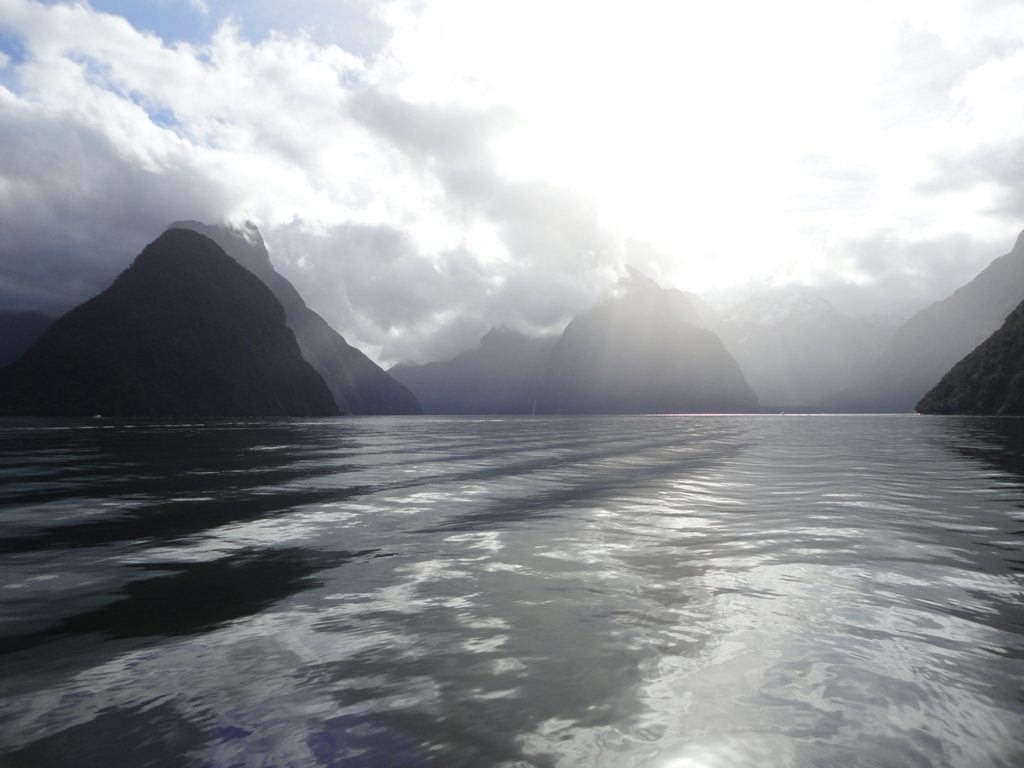
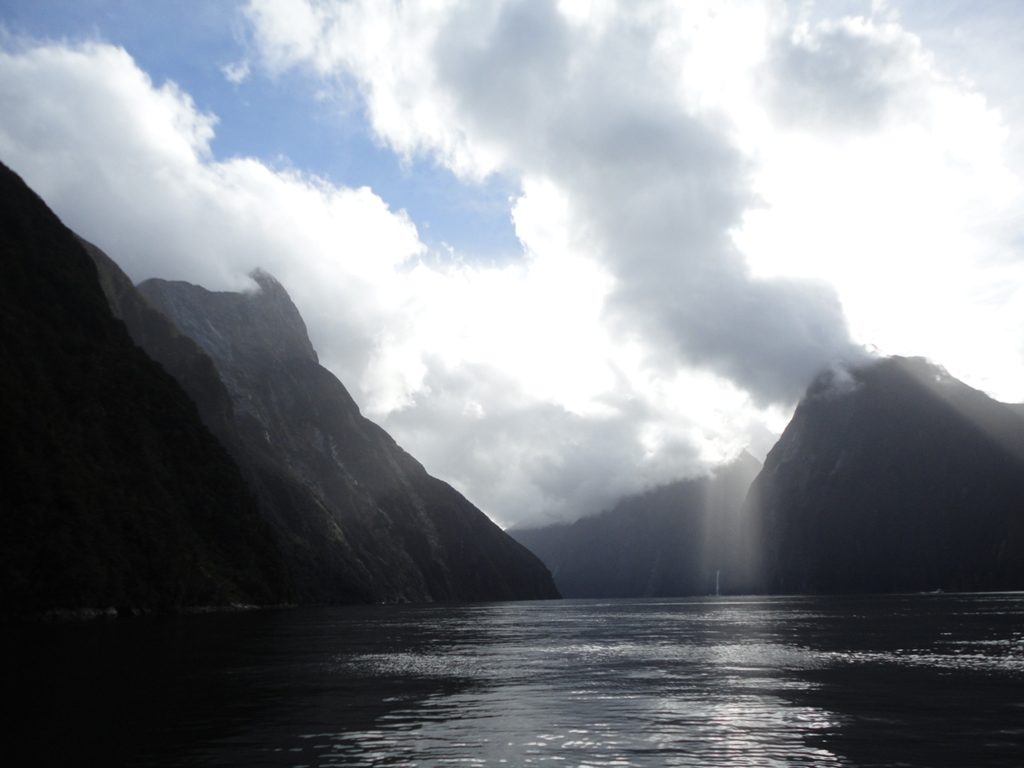
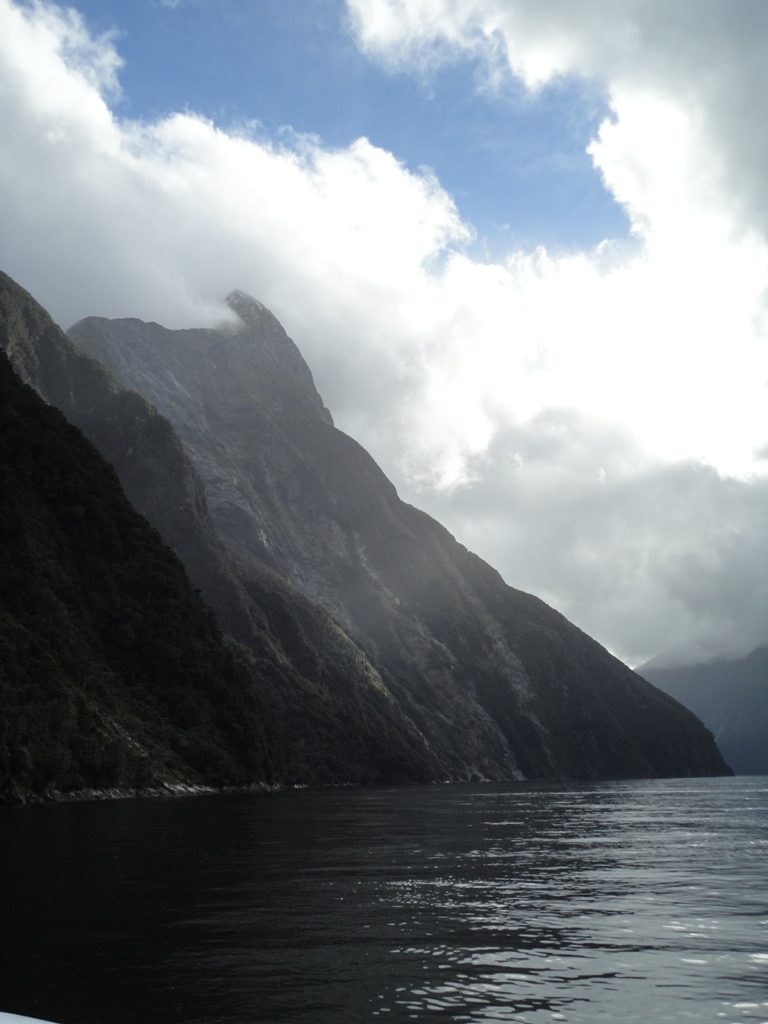
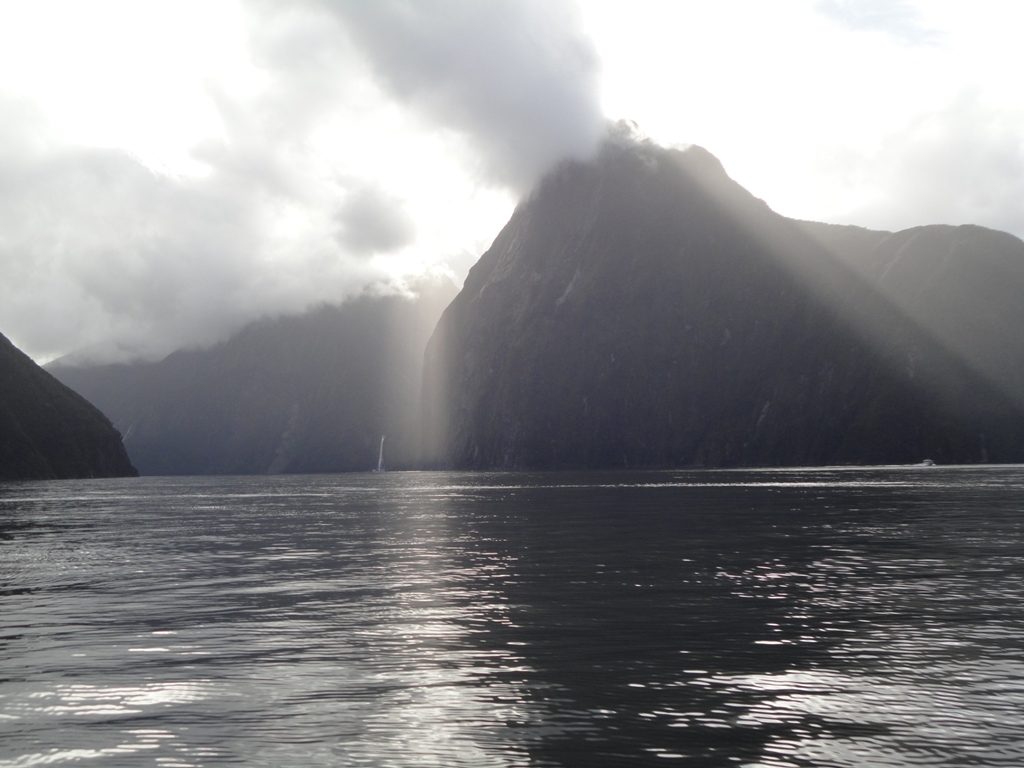
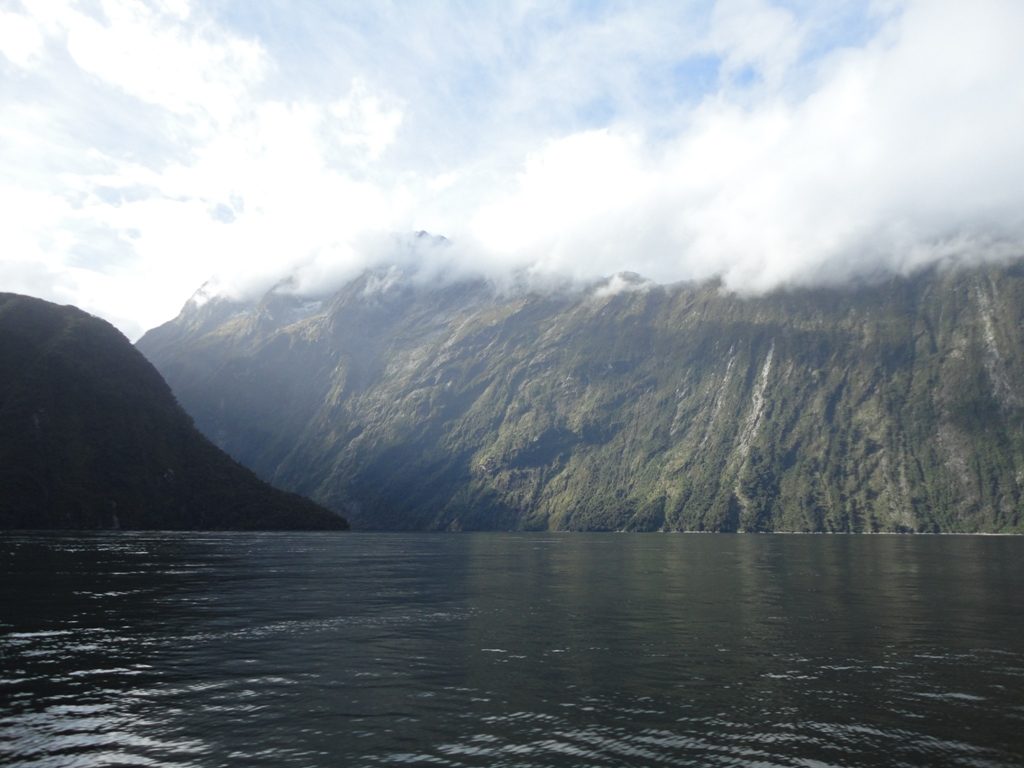
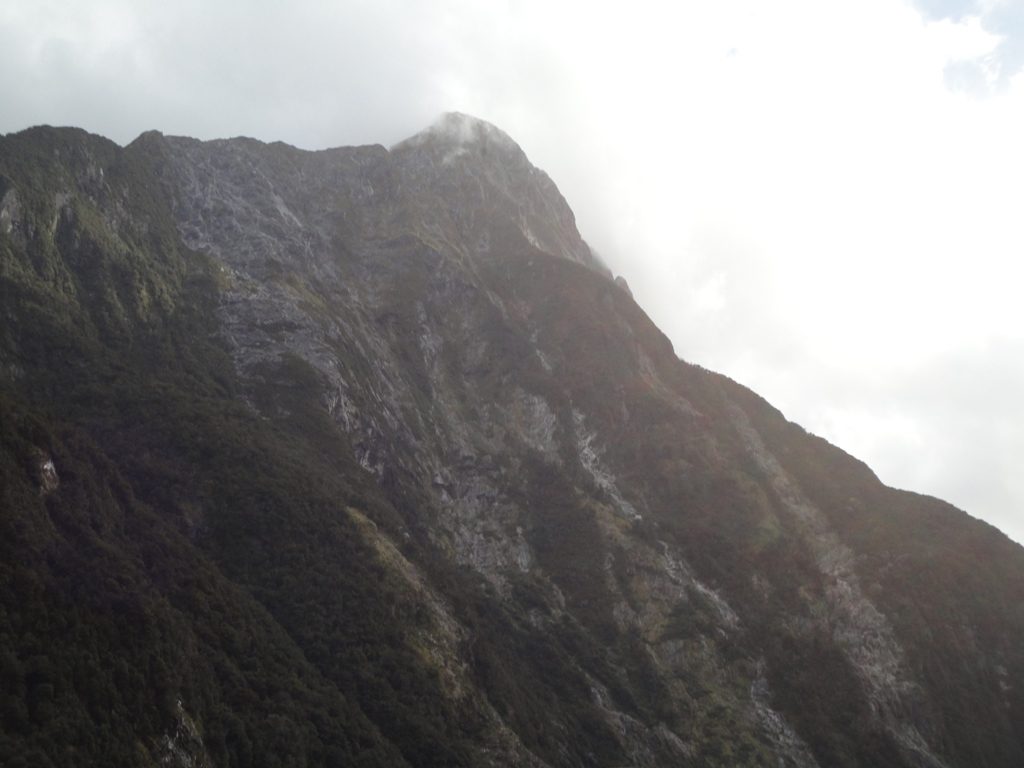
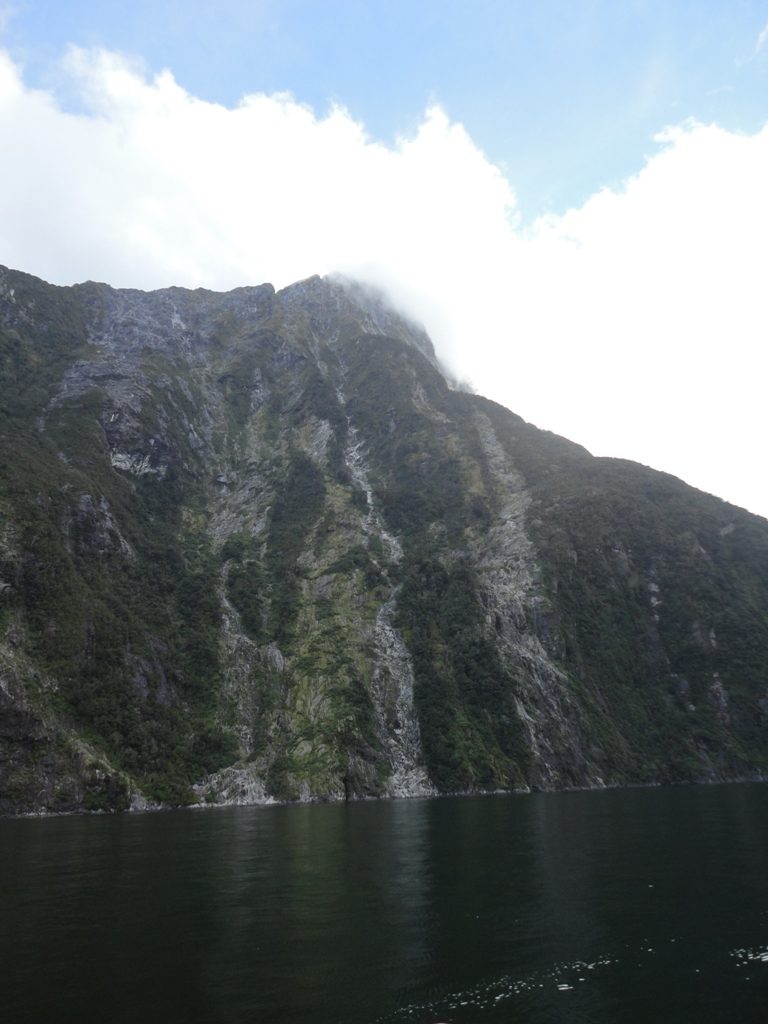
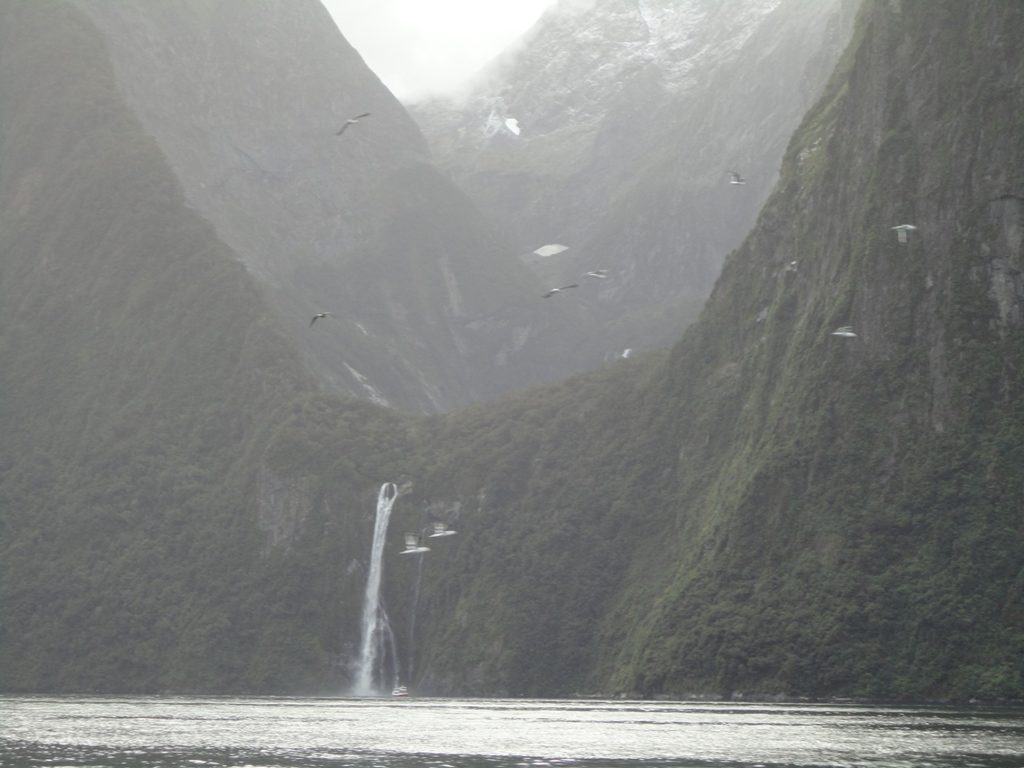
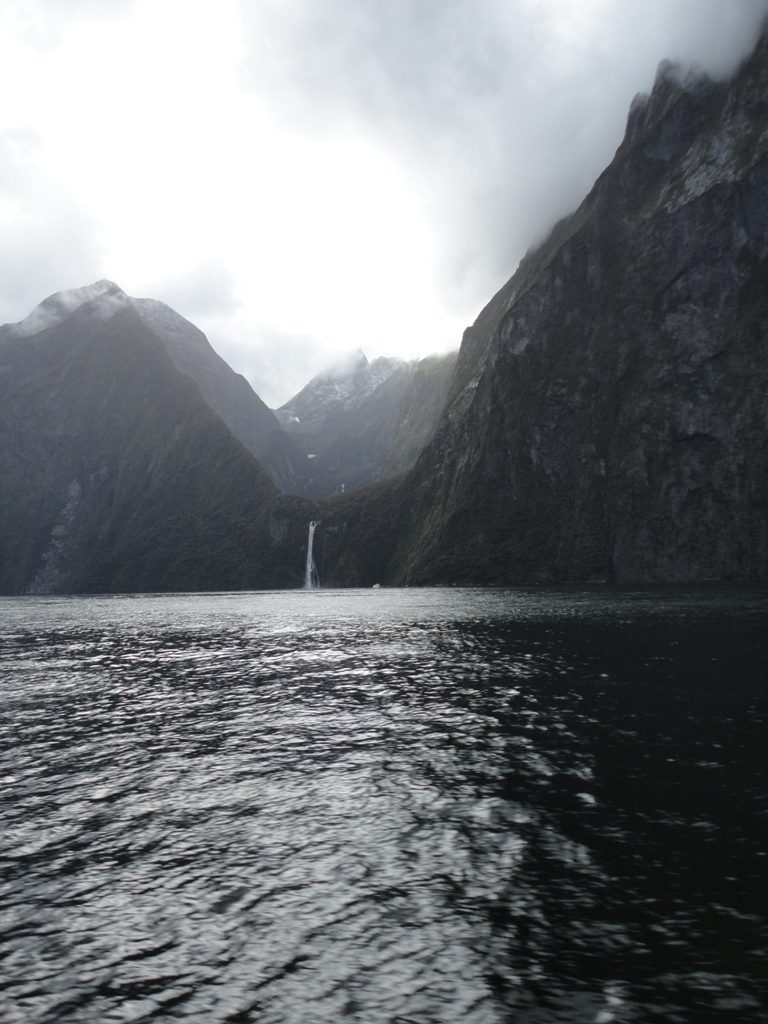
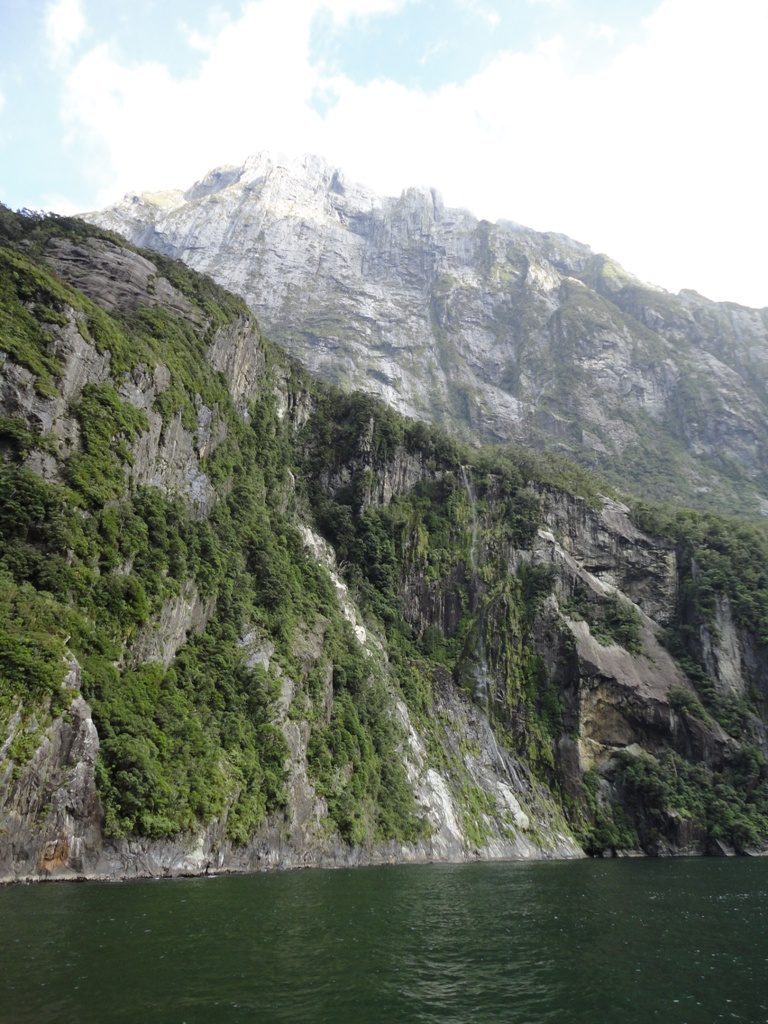
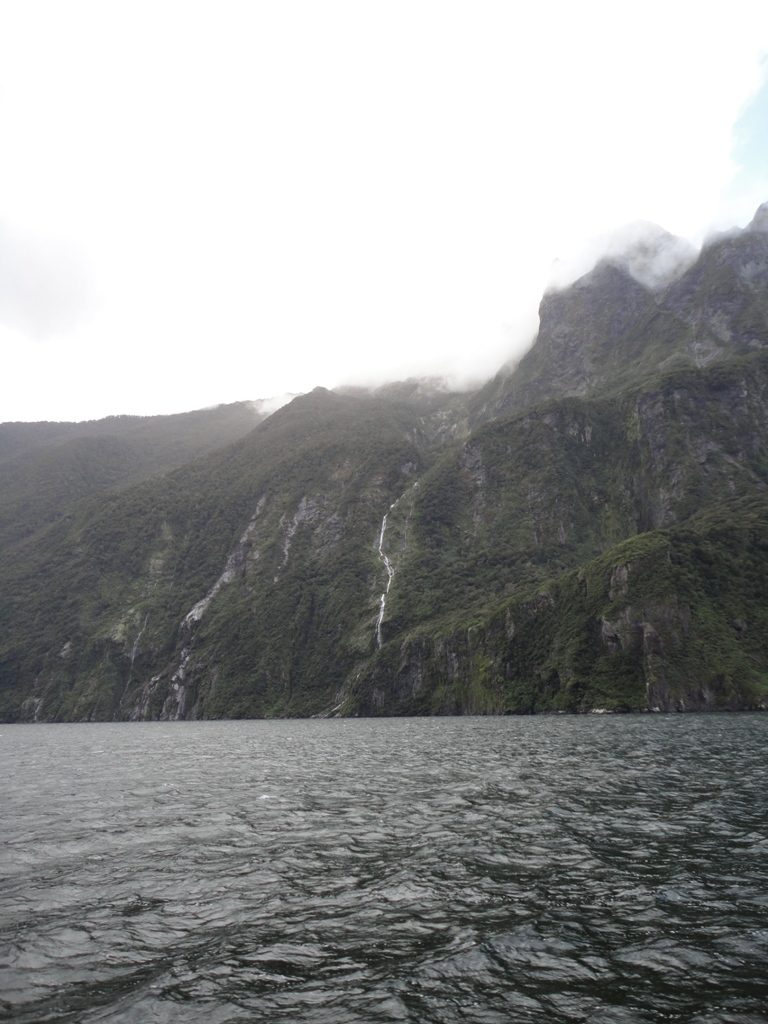
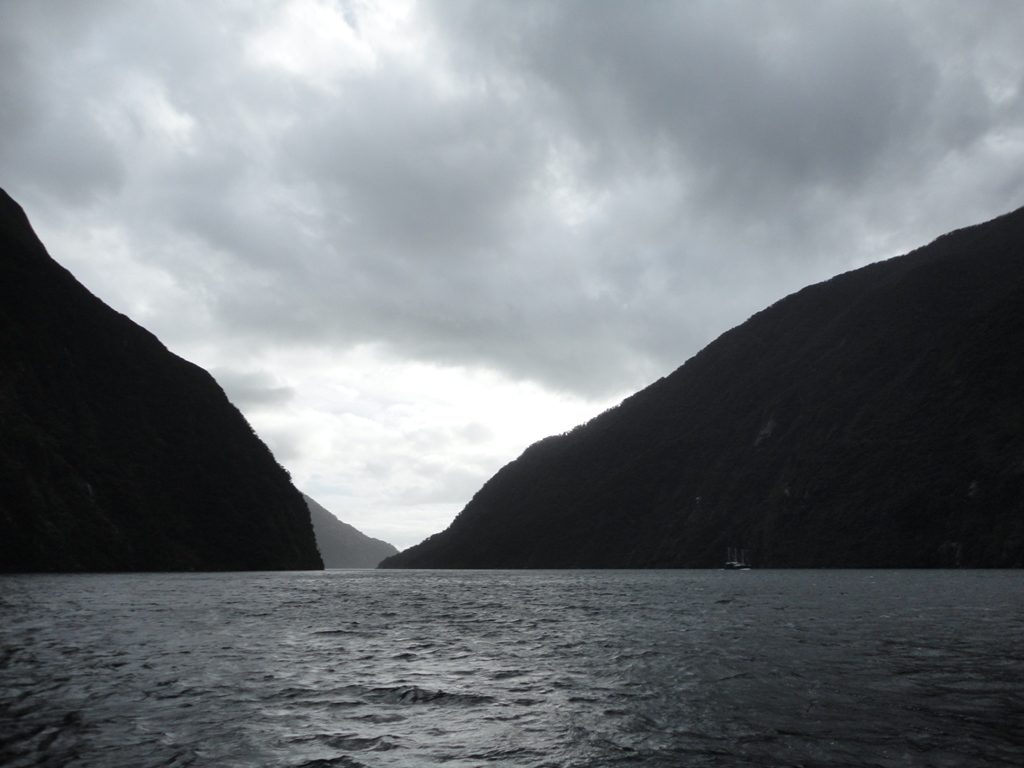
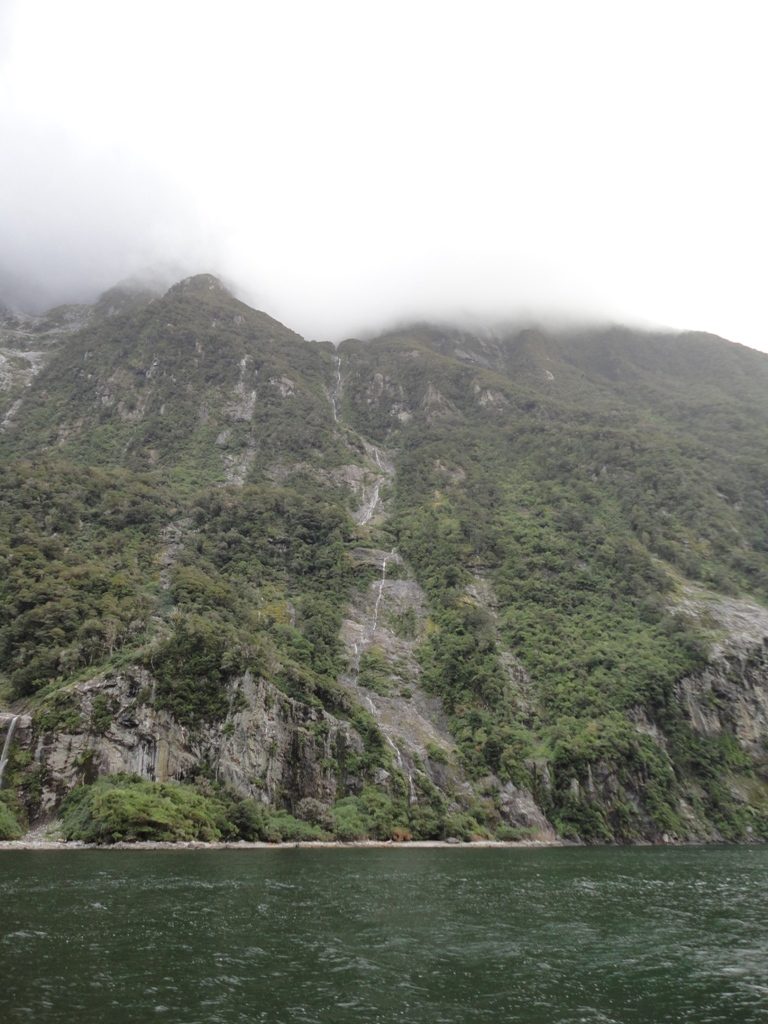
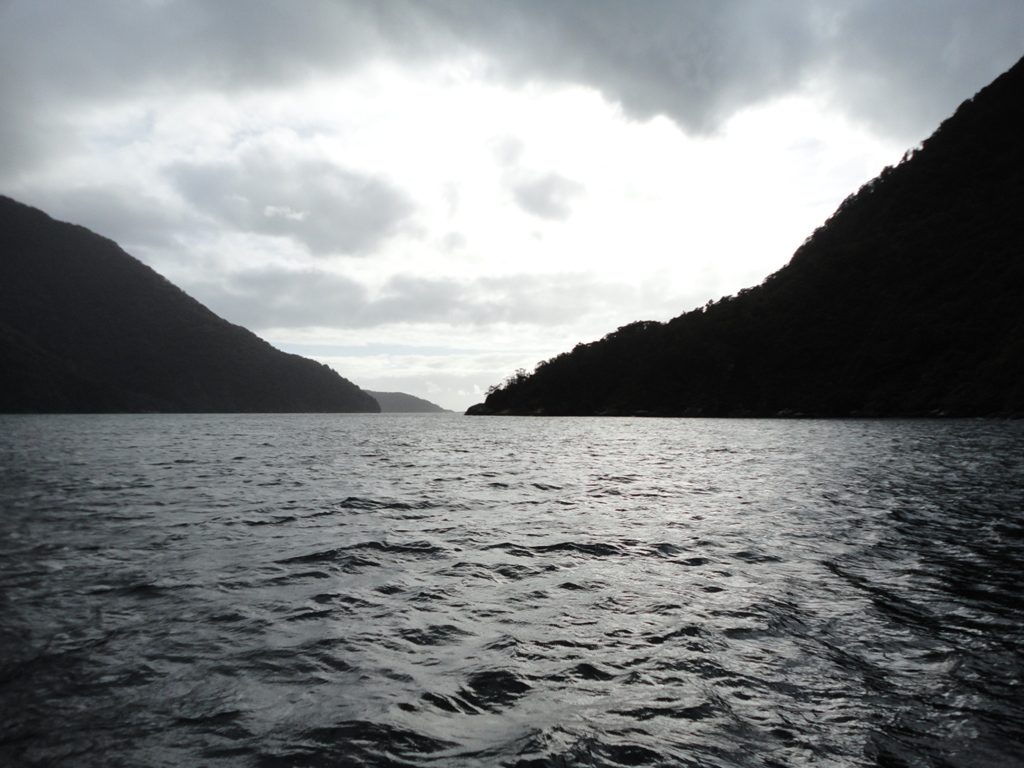
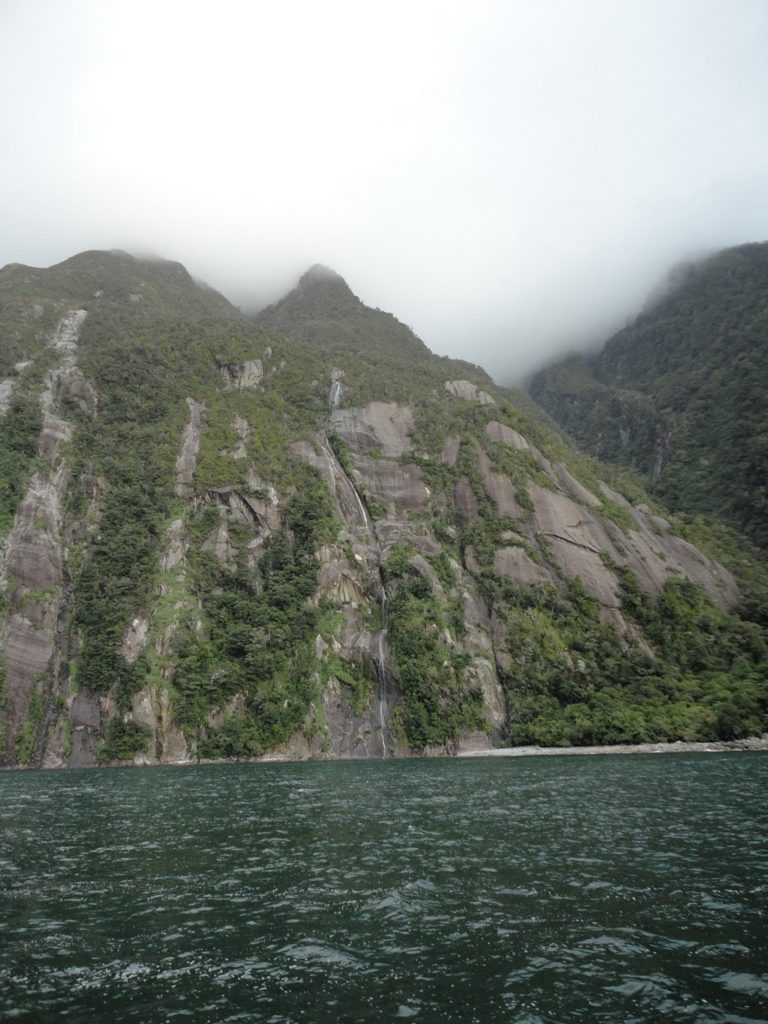
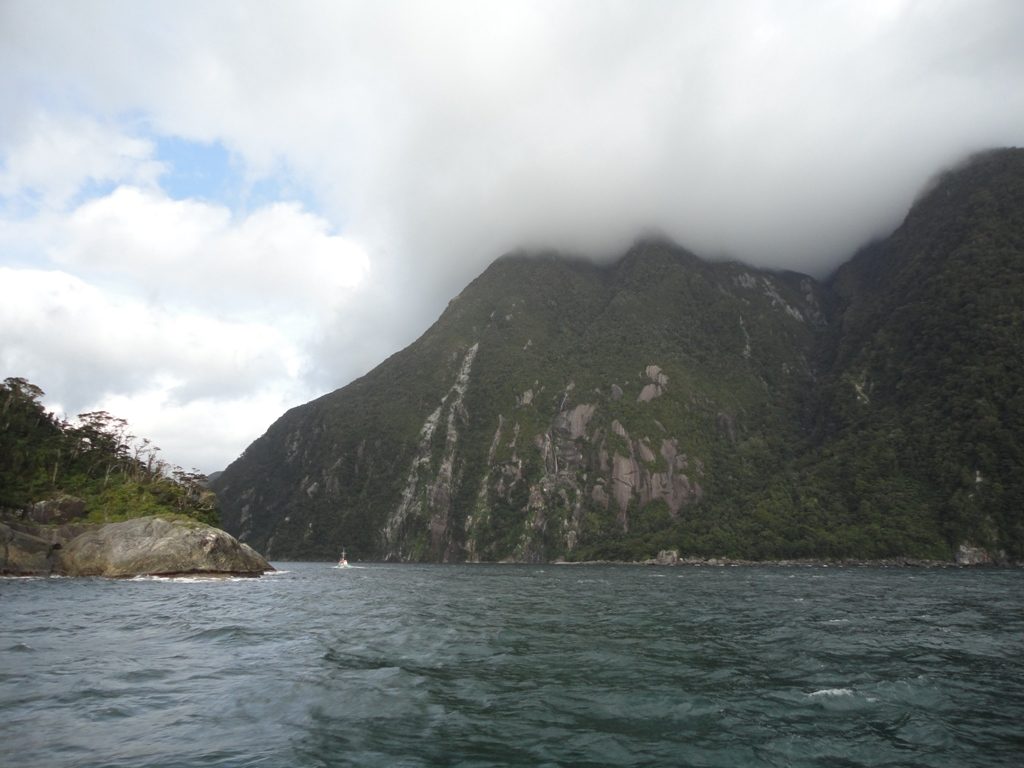
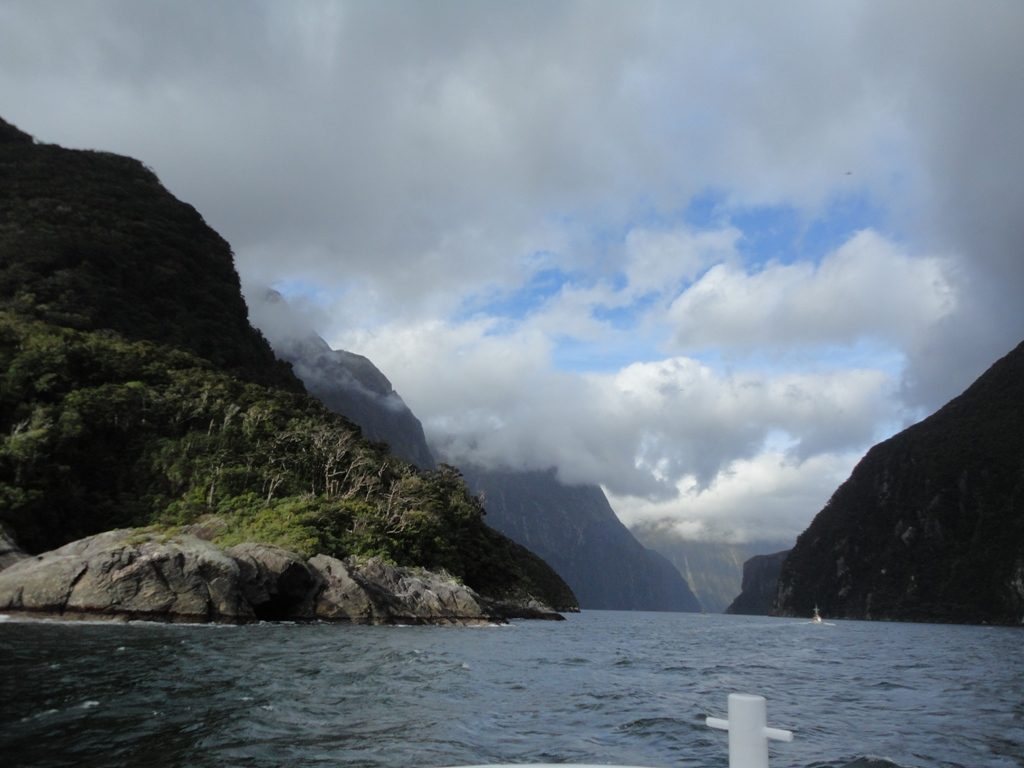
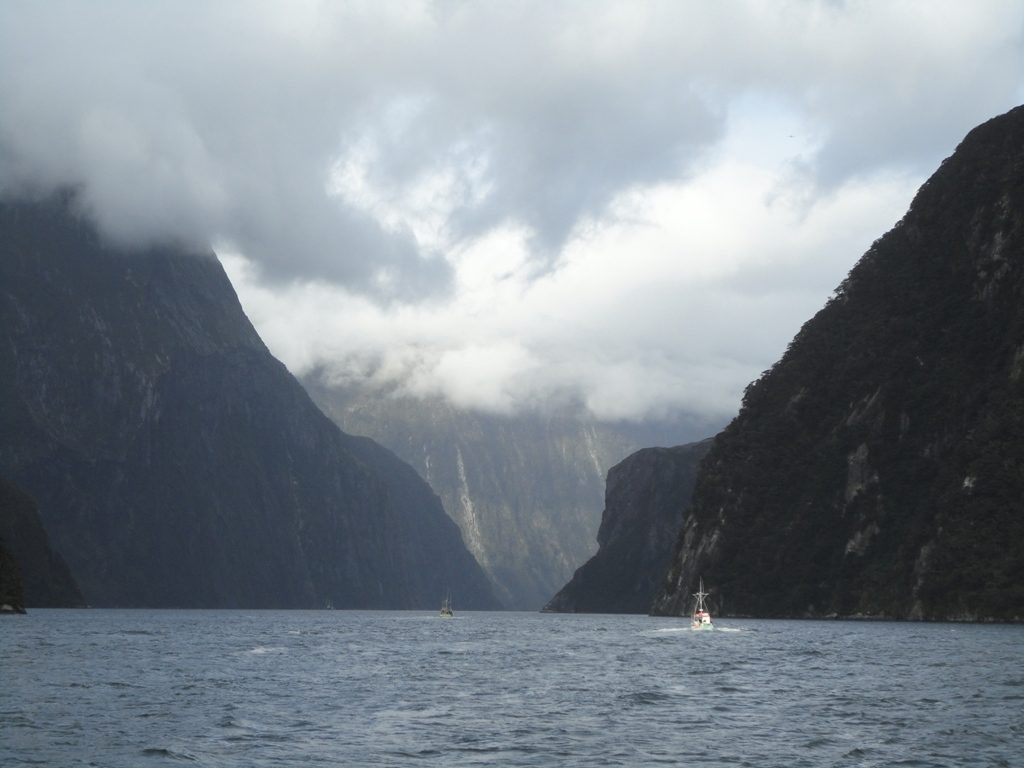
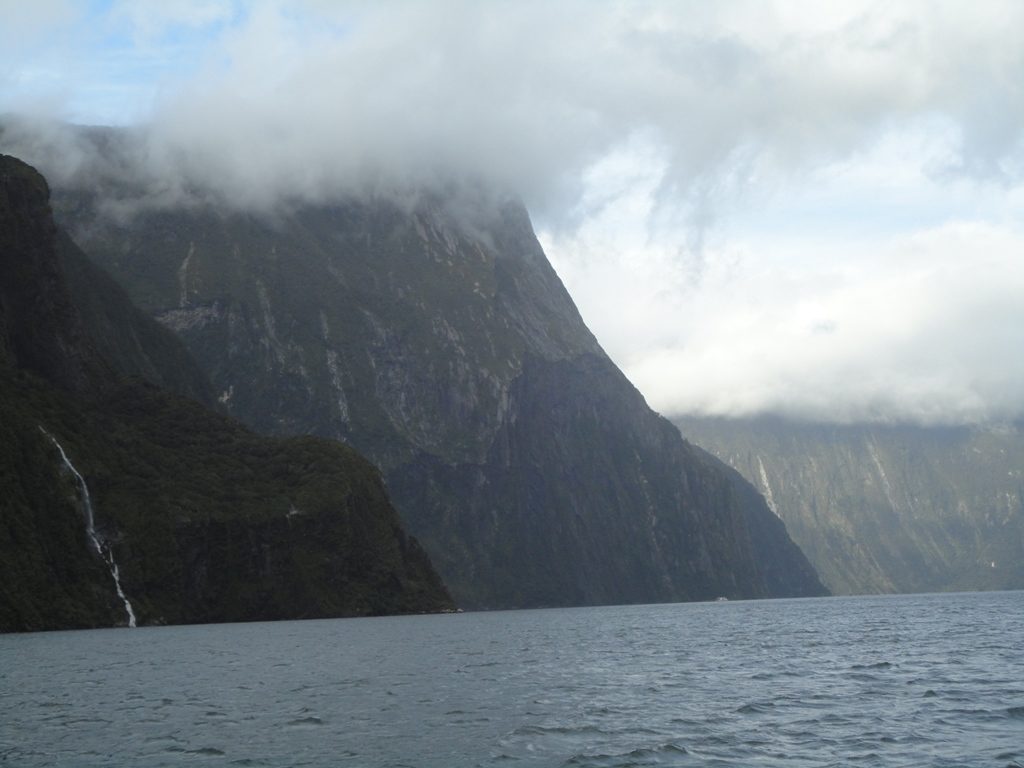
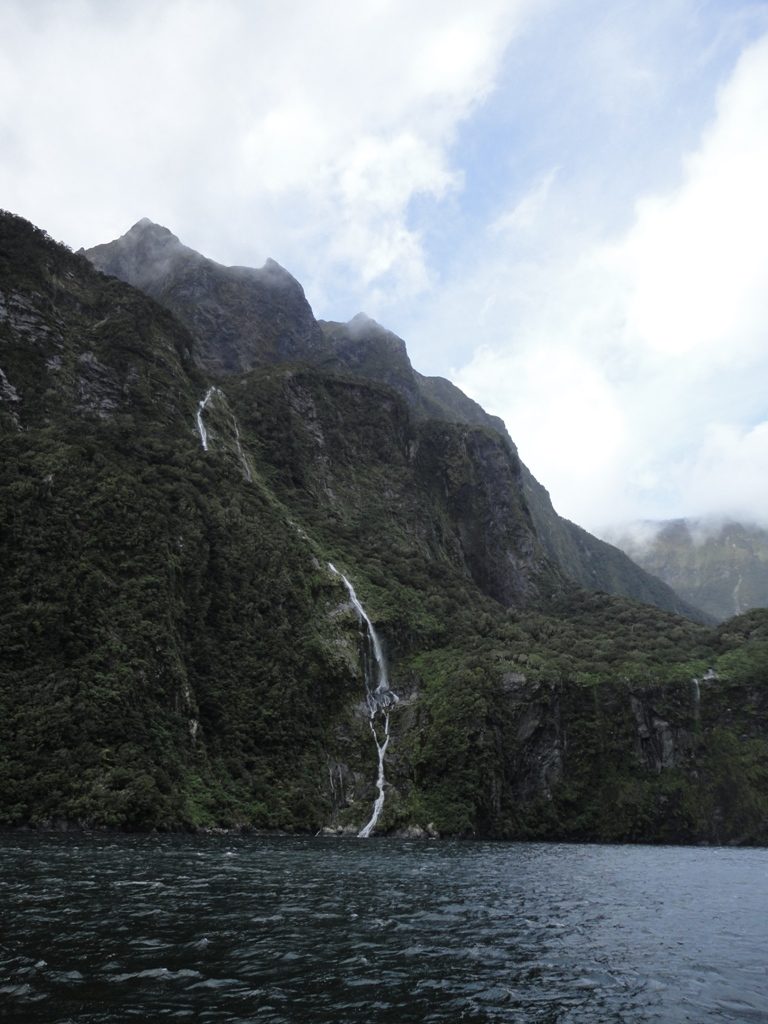
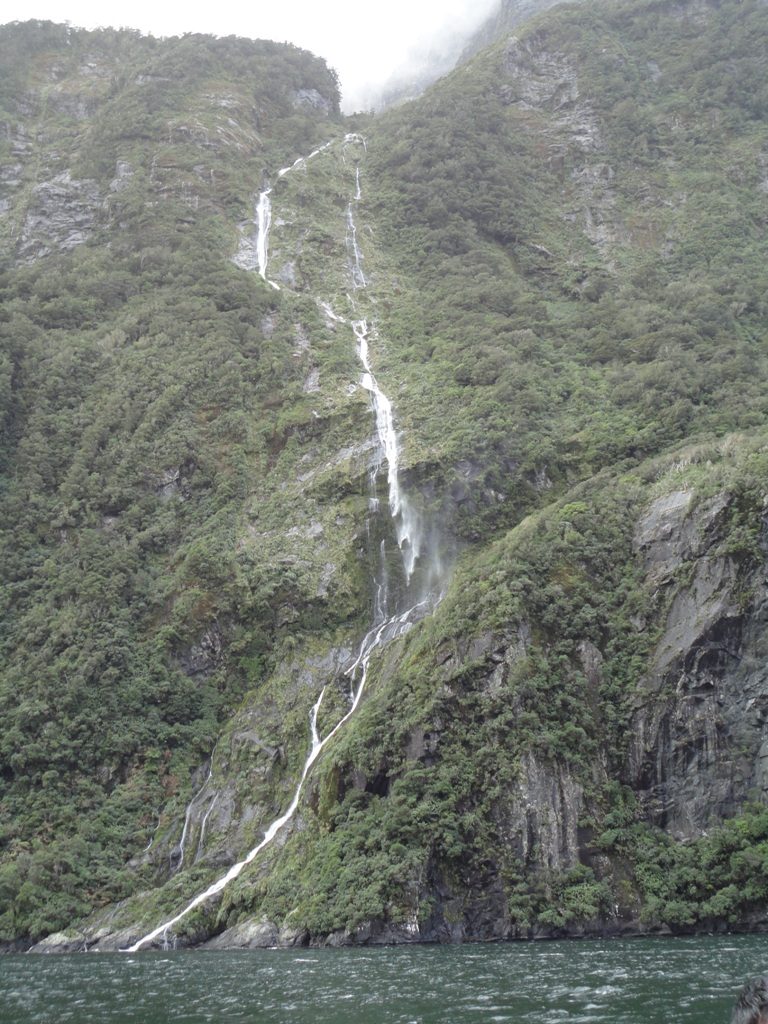
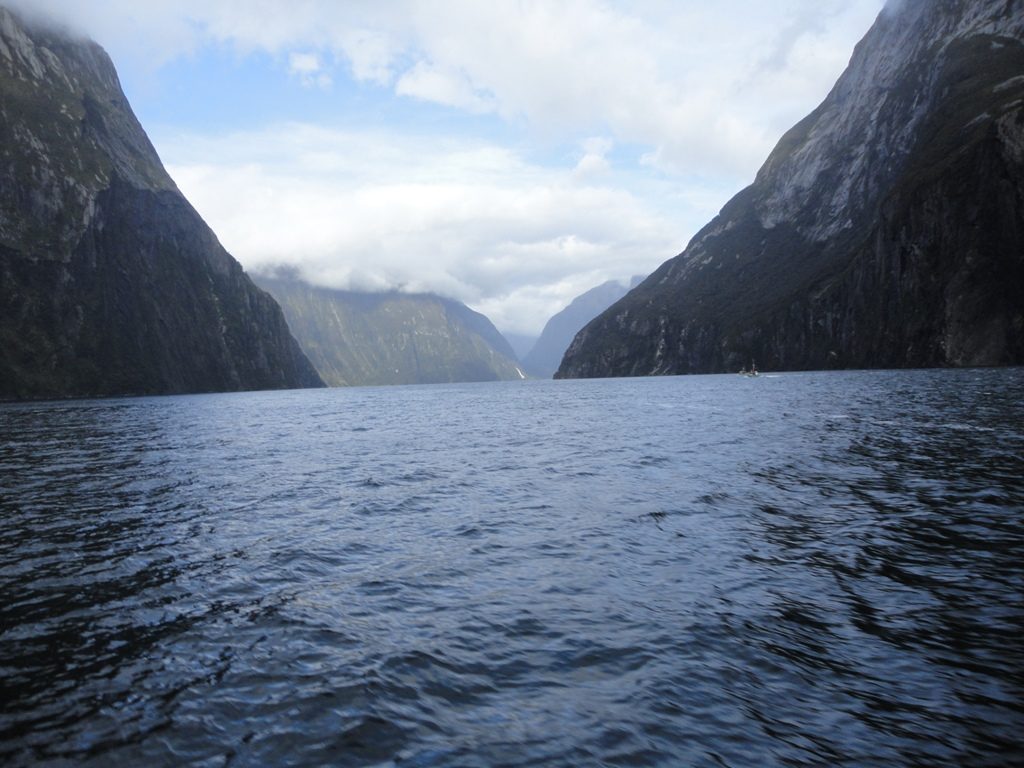
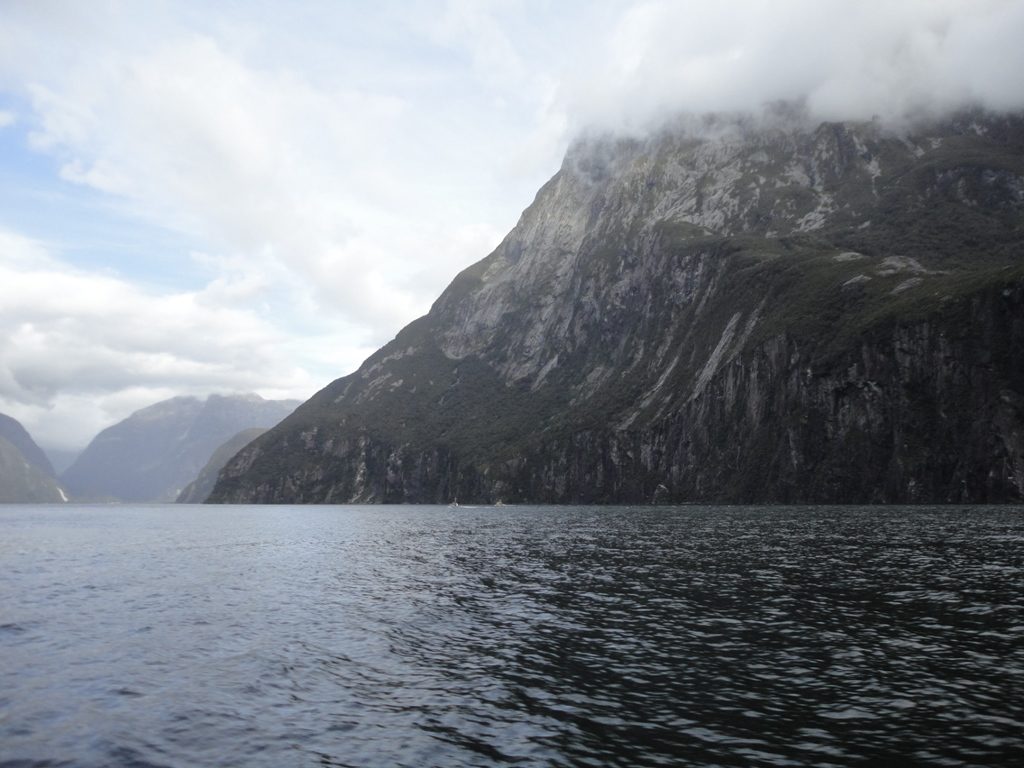
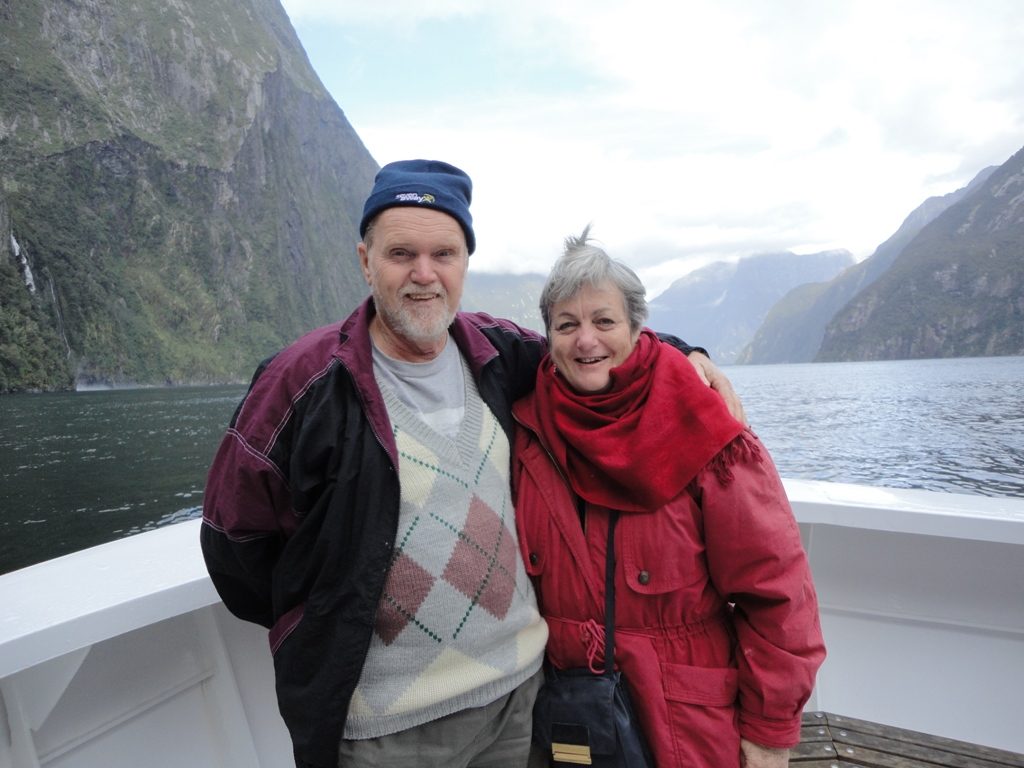
Ken & Harriet on the ship
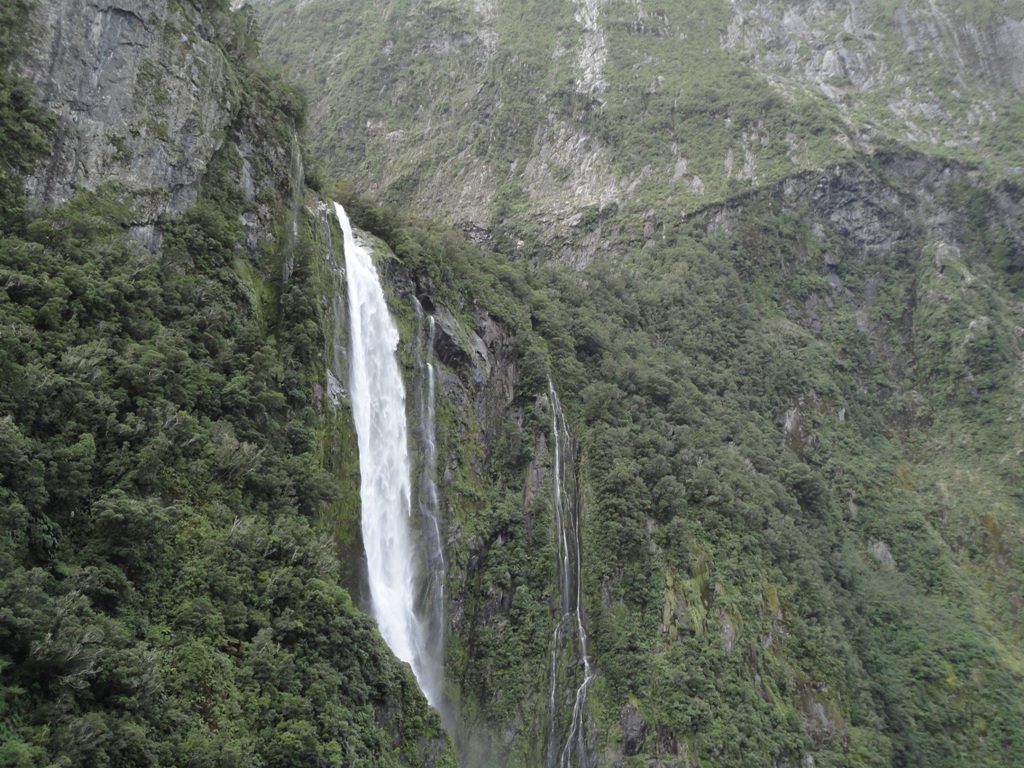
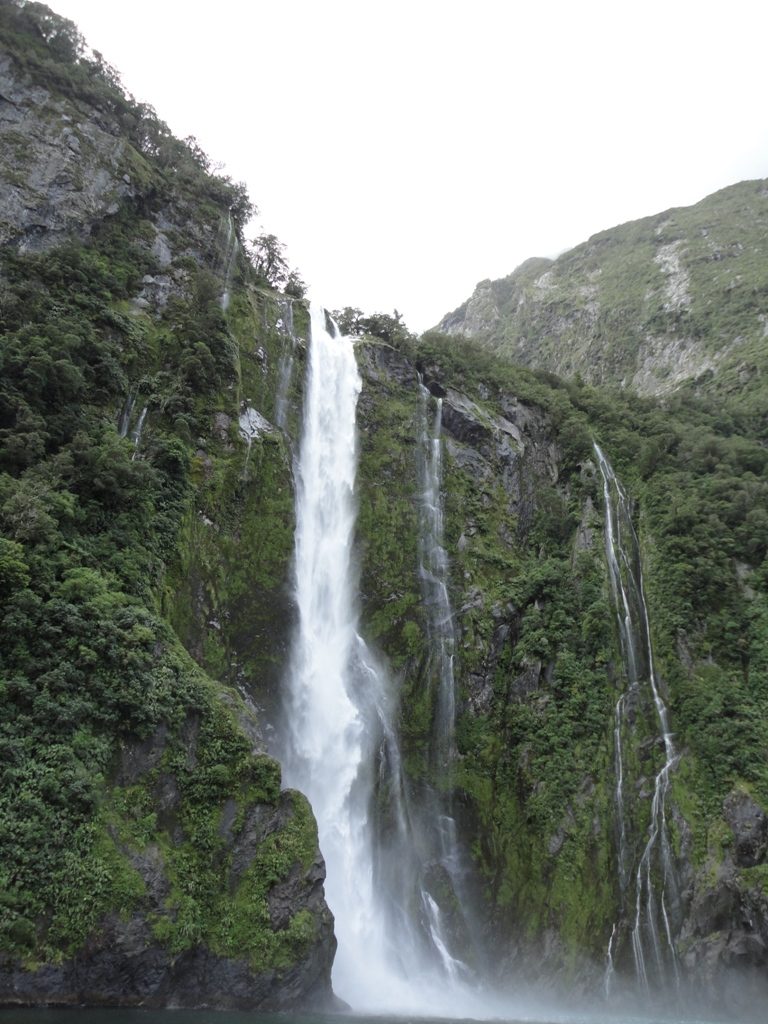

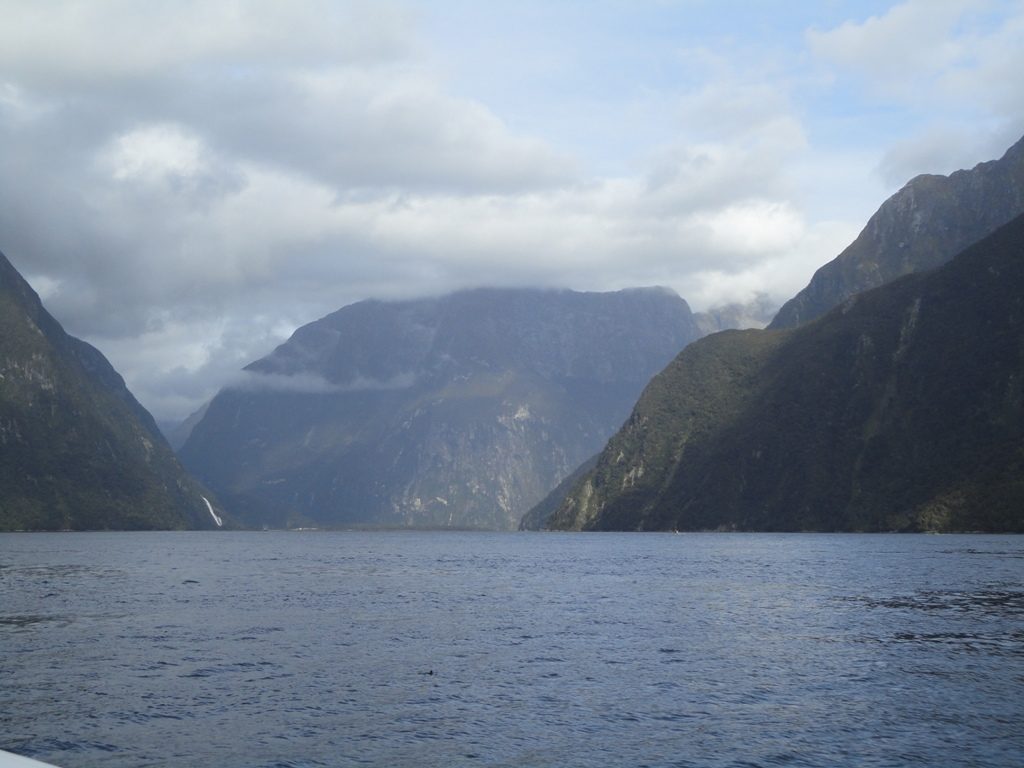
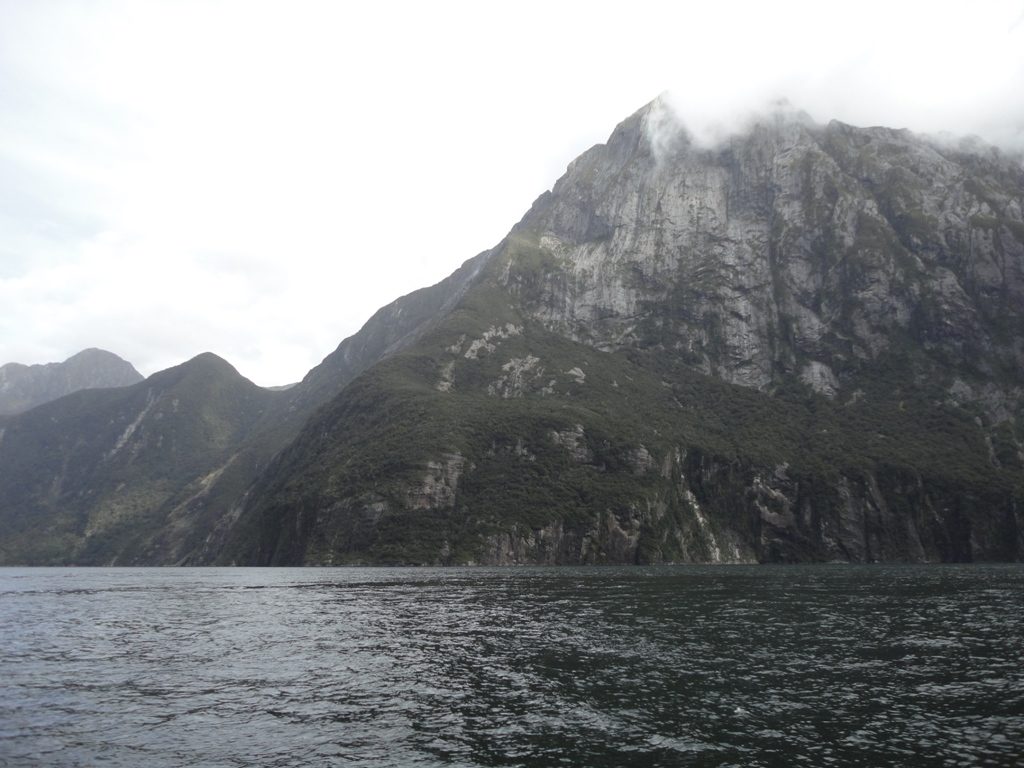

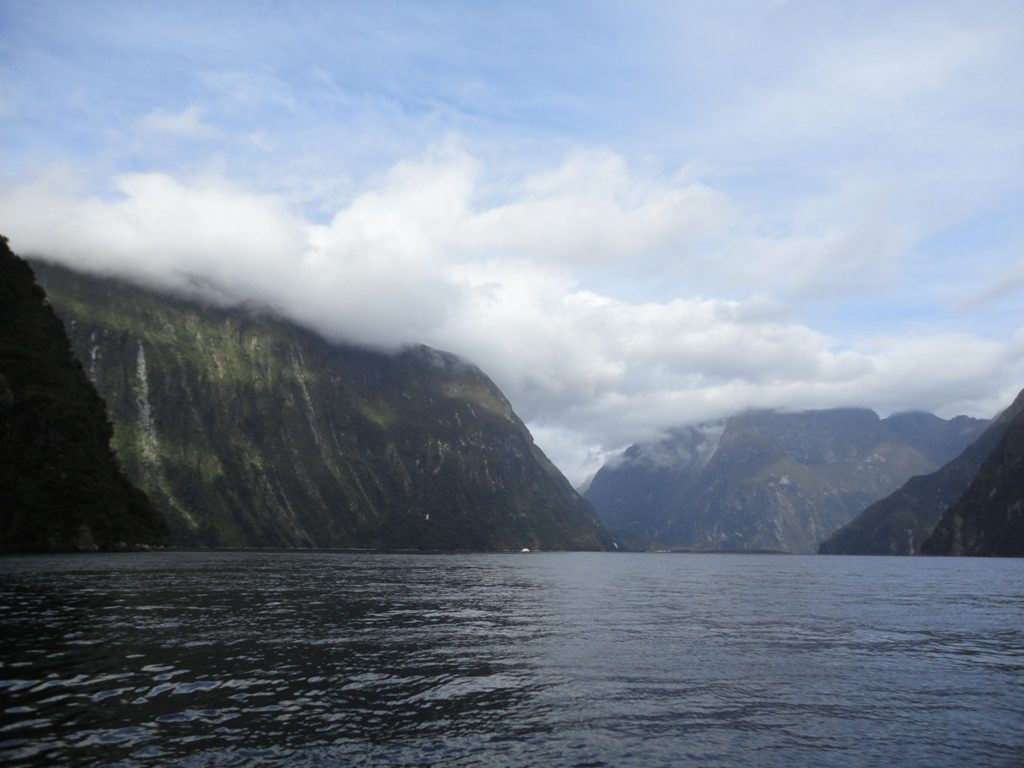

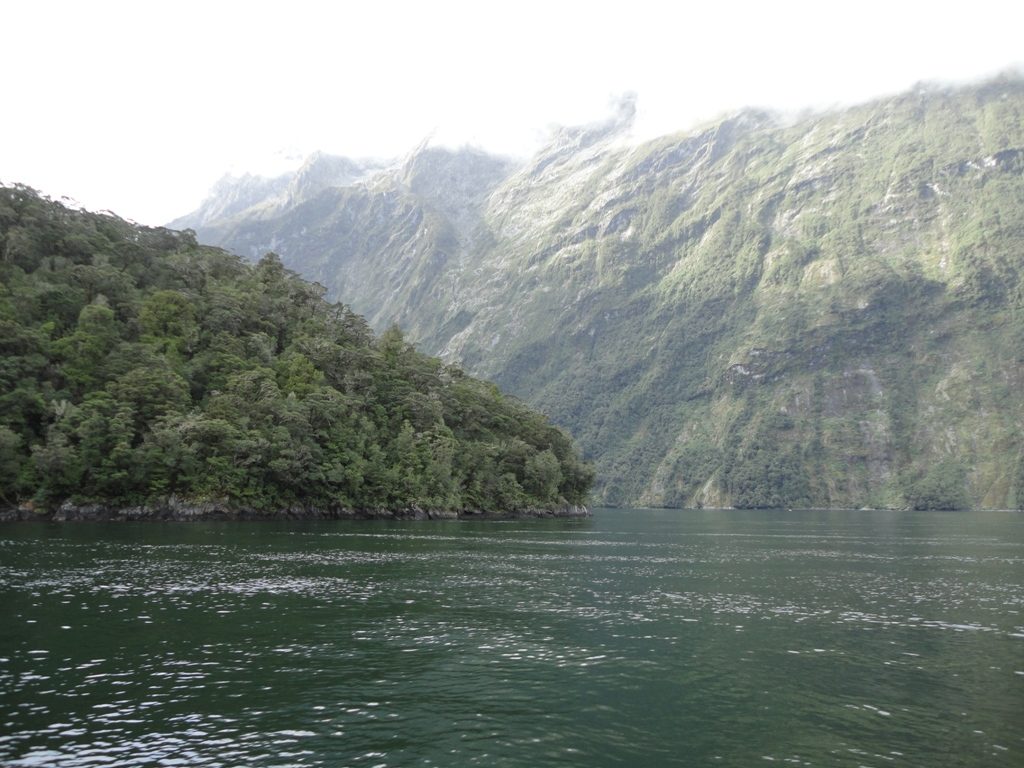
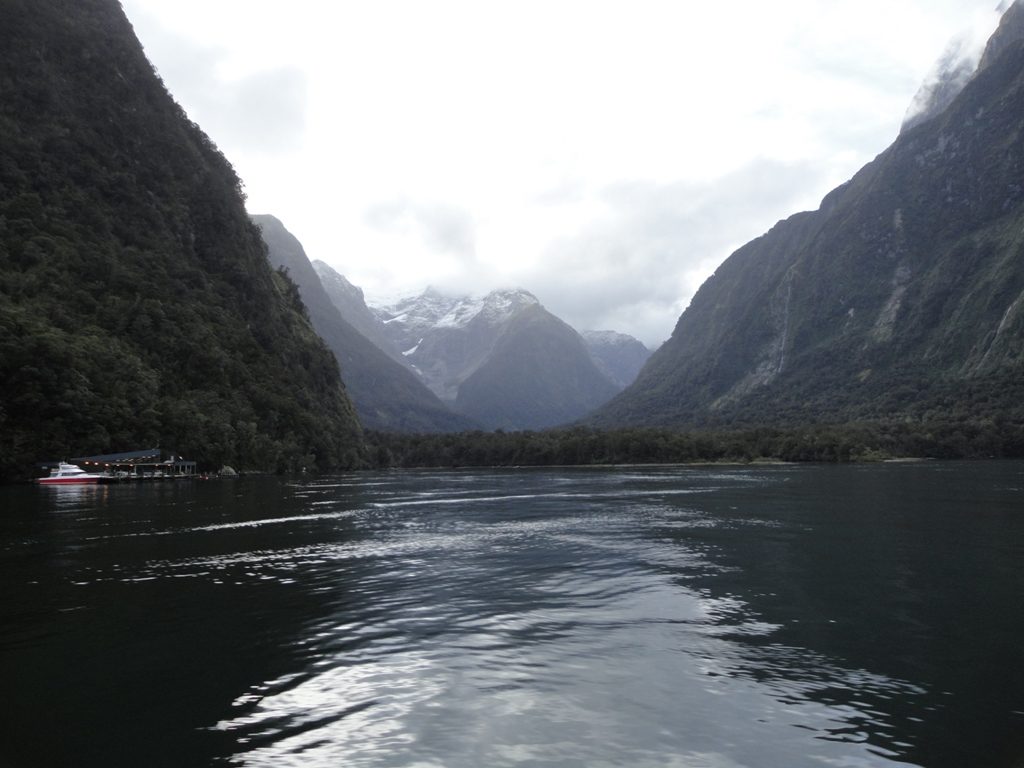

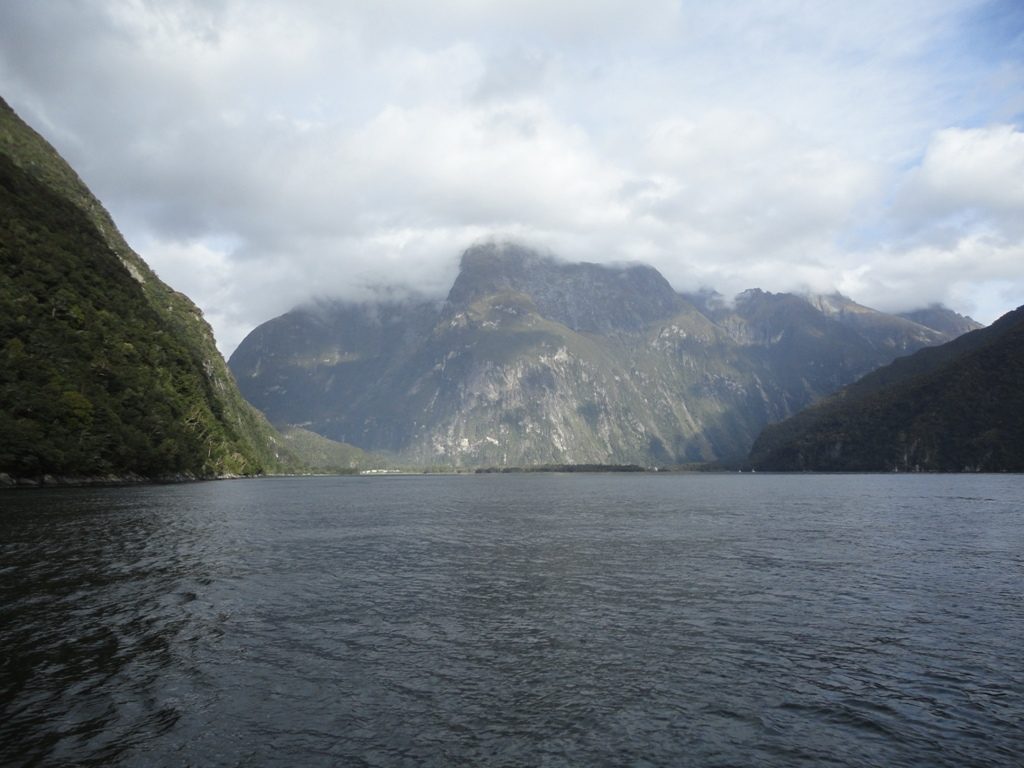
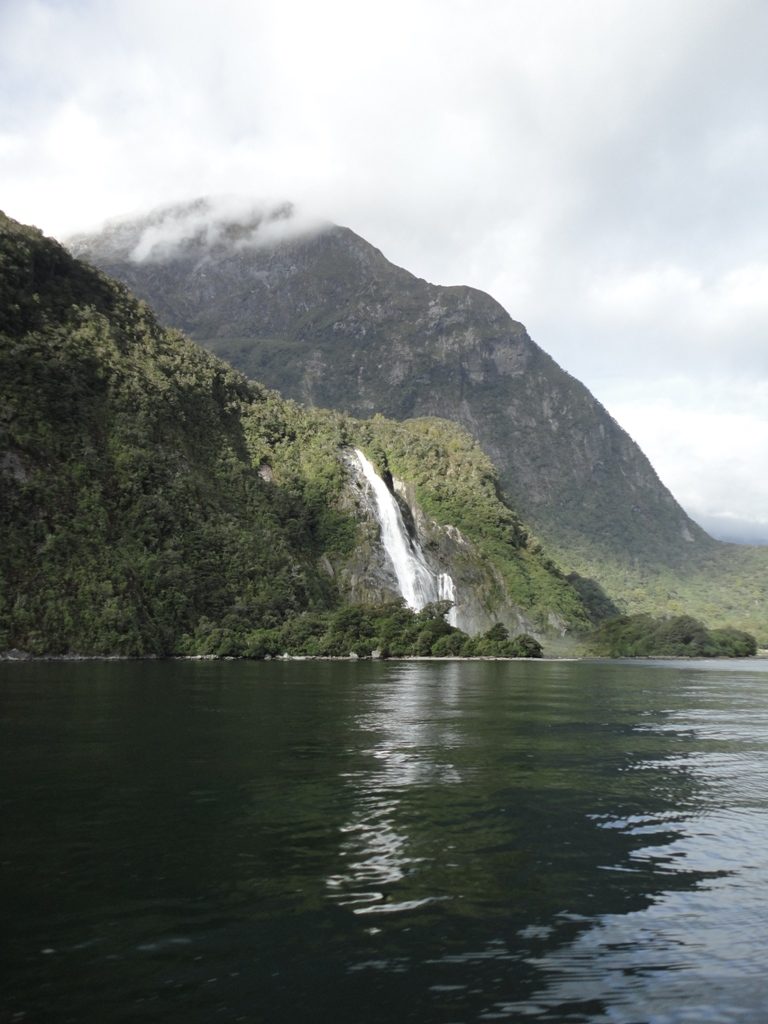

______________________________________________________________________________
The end of an Awesome day at Milford Sound !!
______________________________________________________________________________
